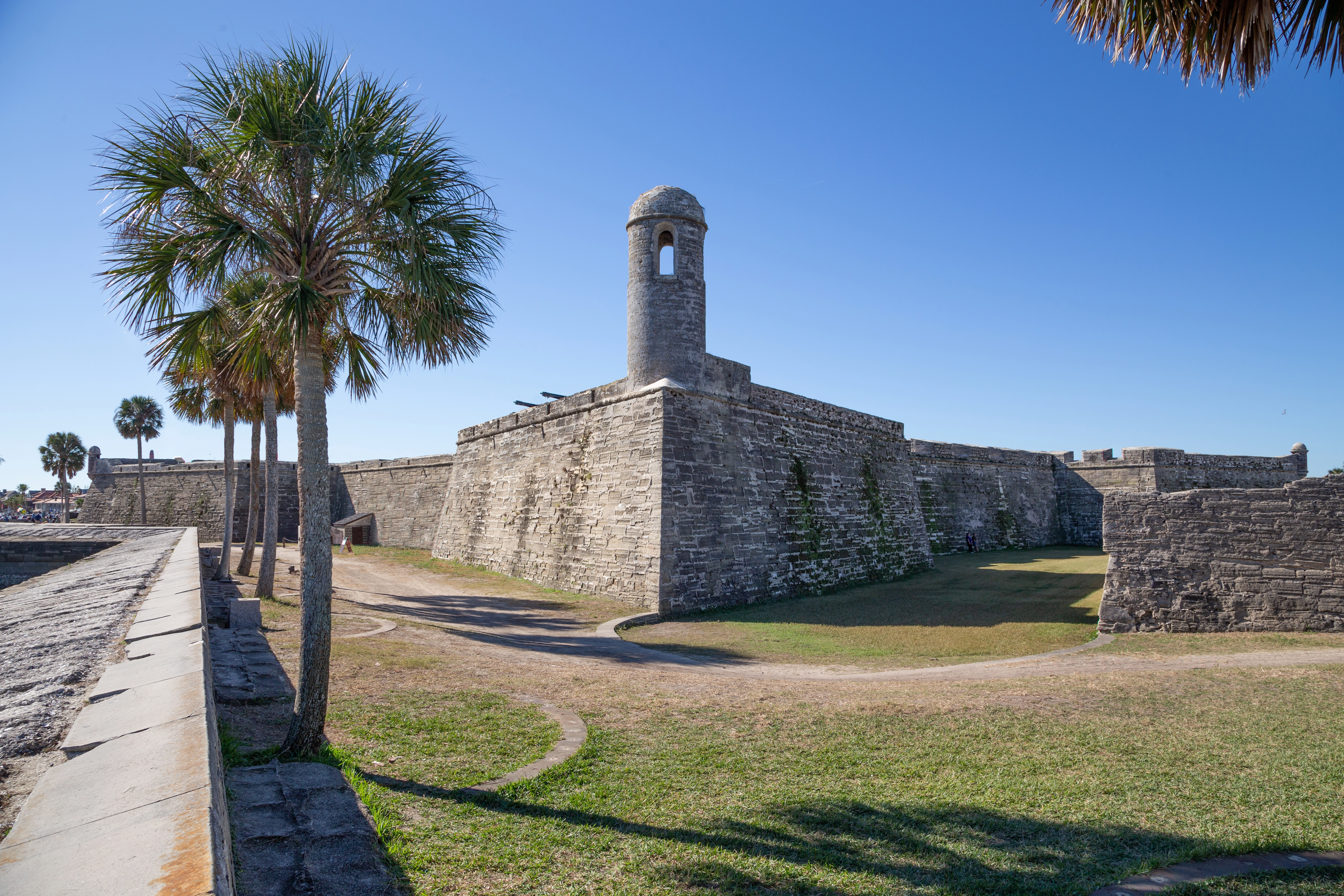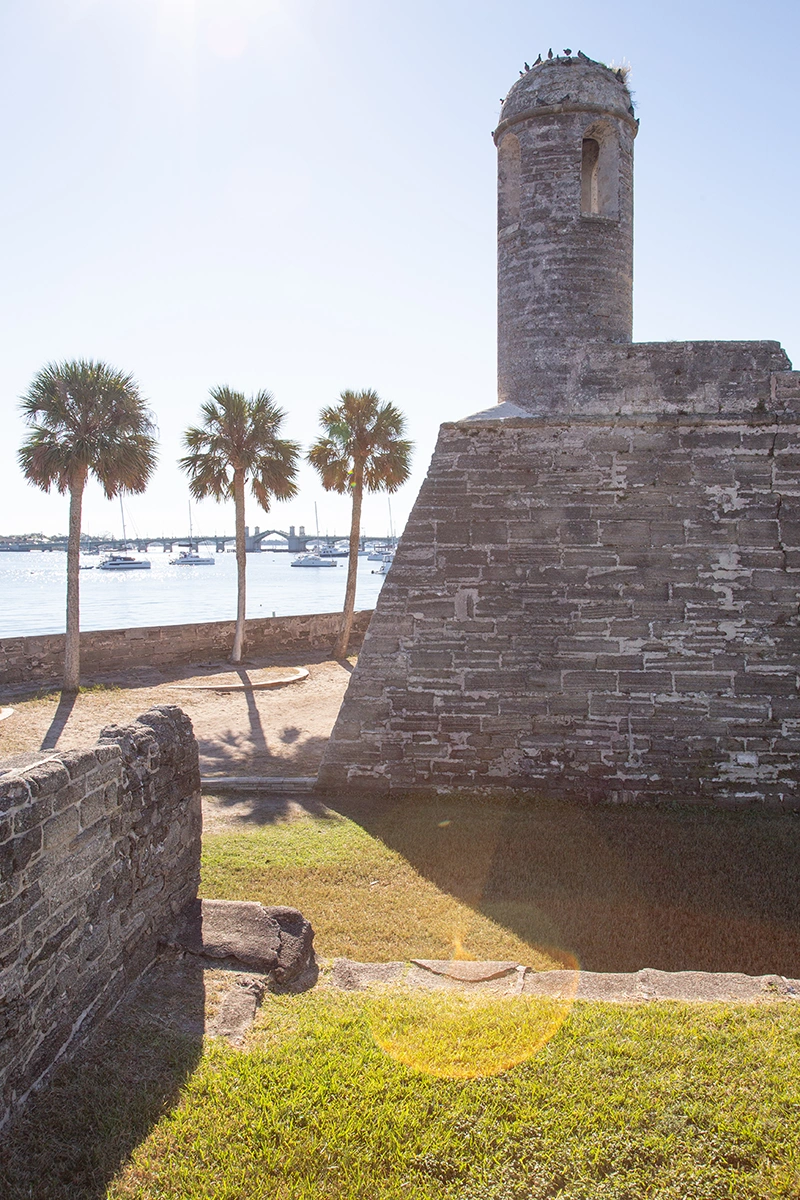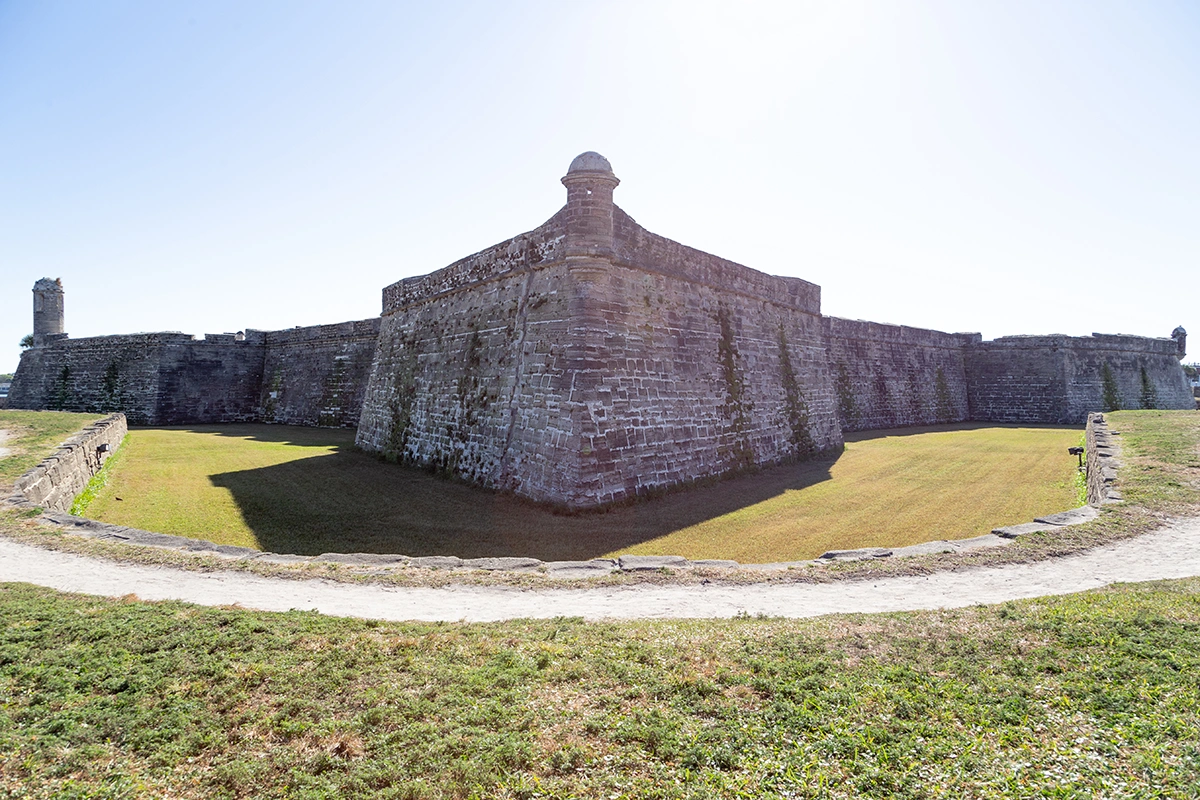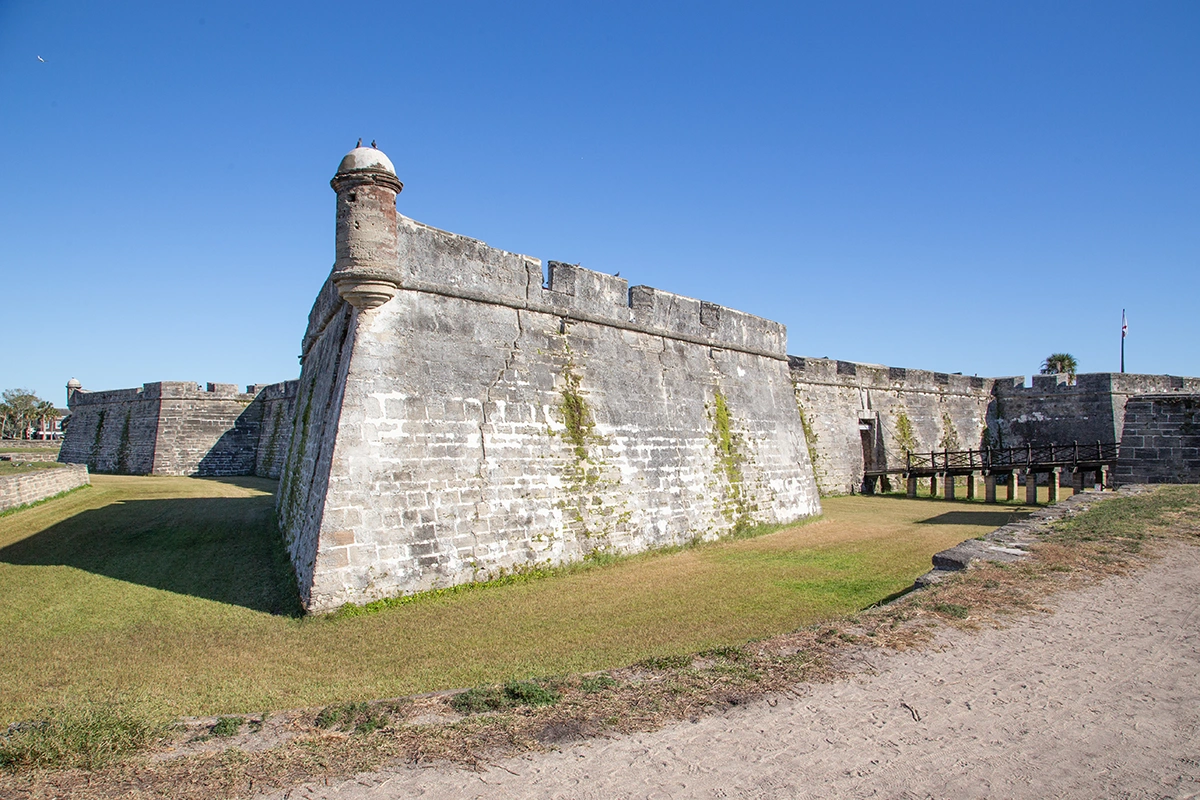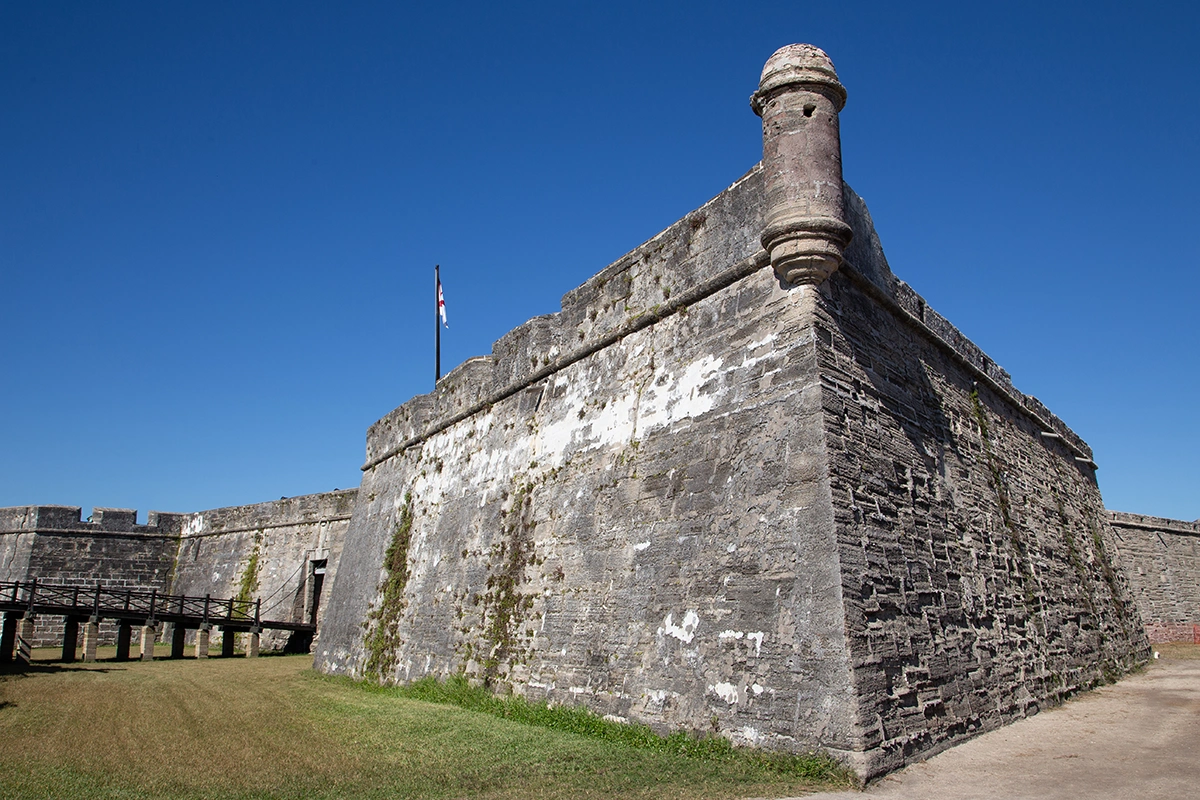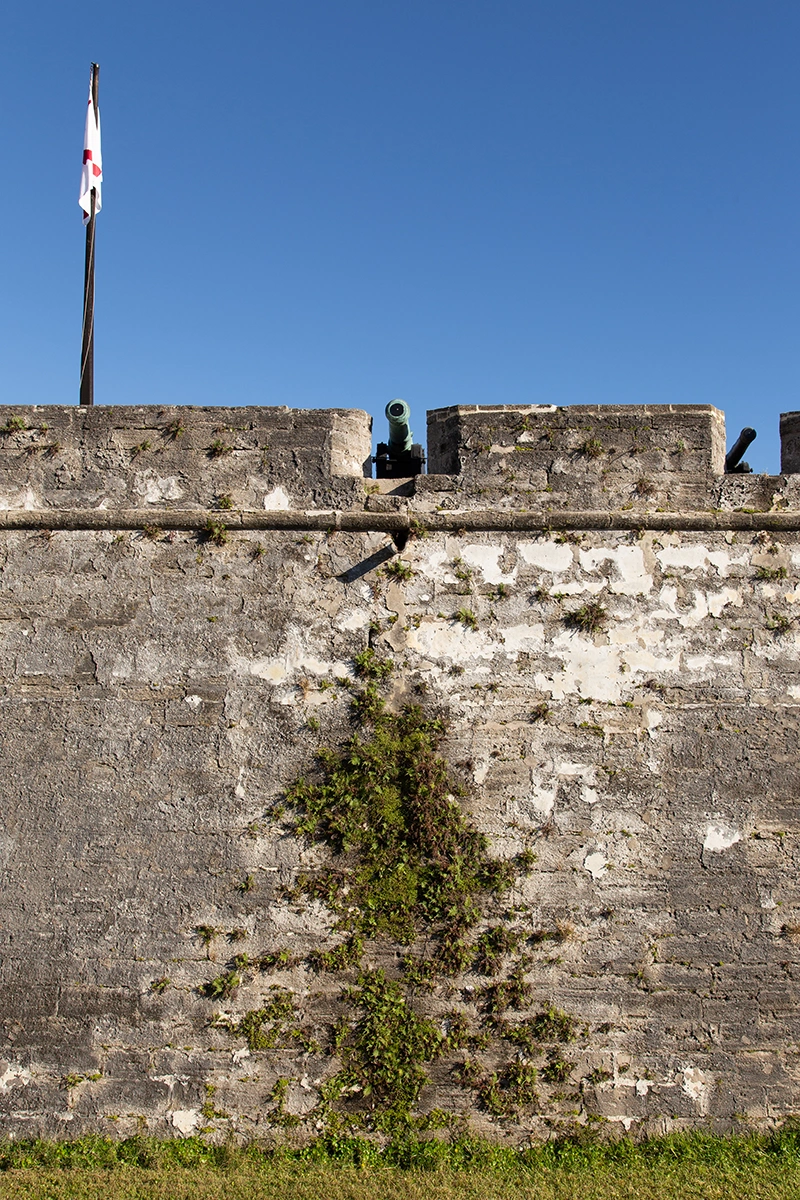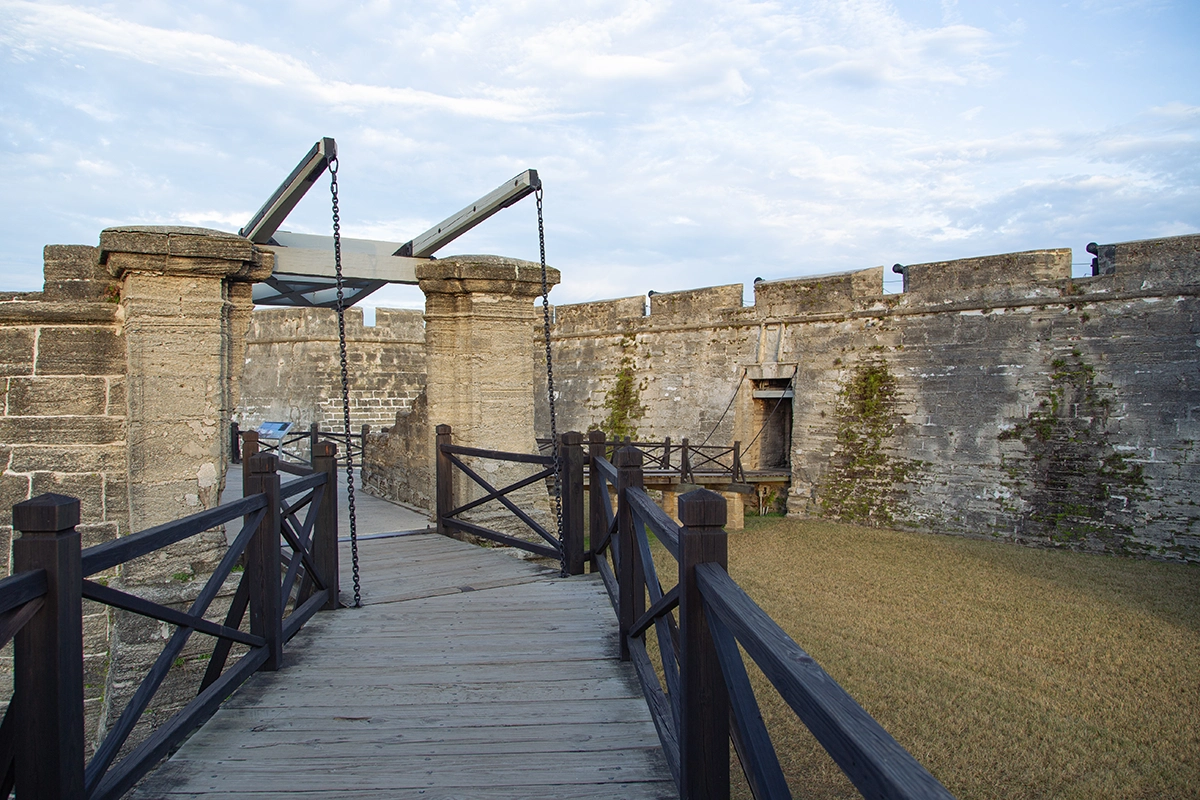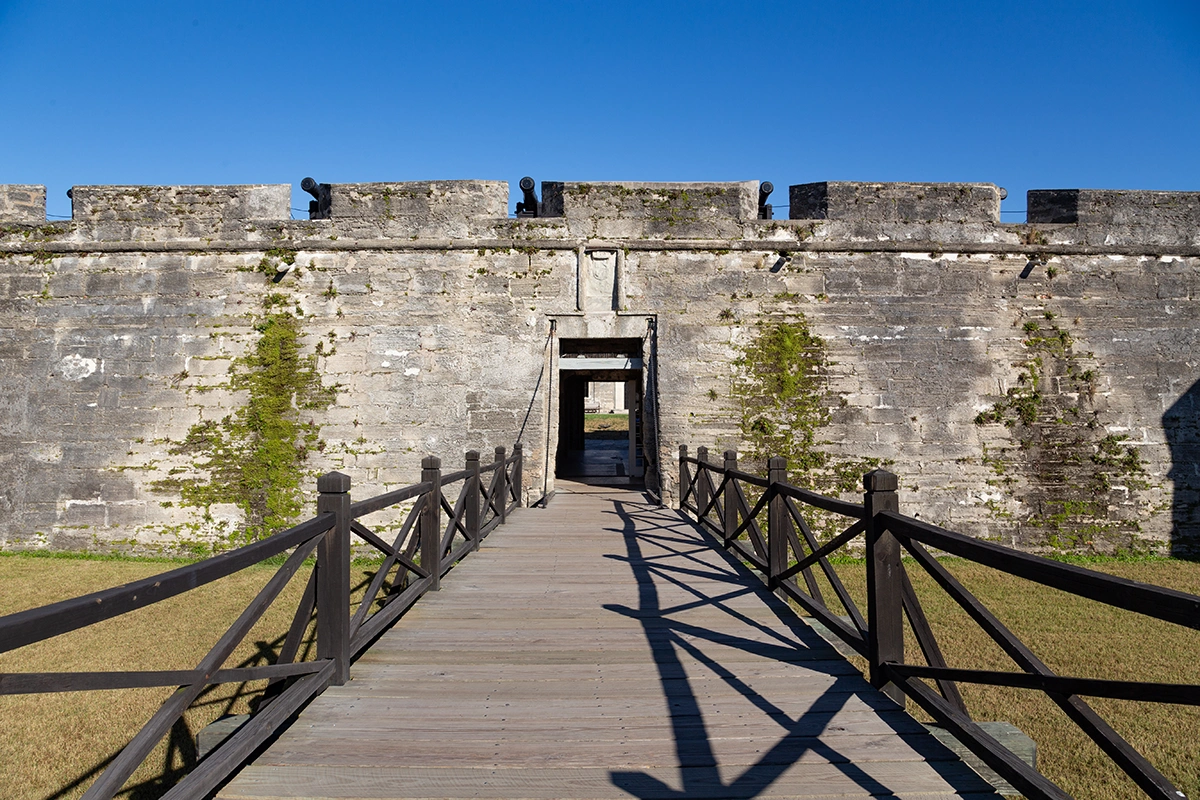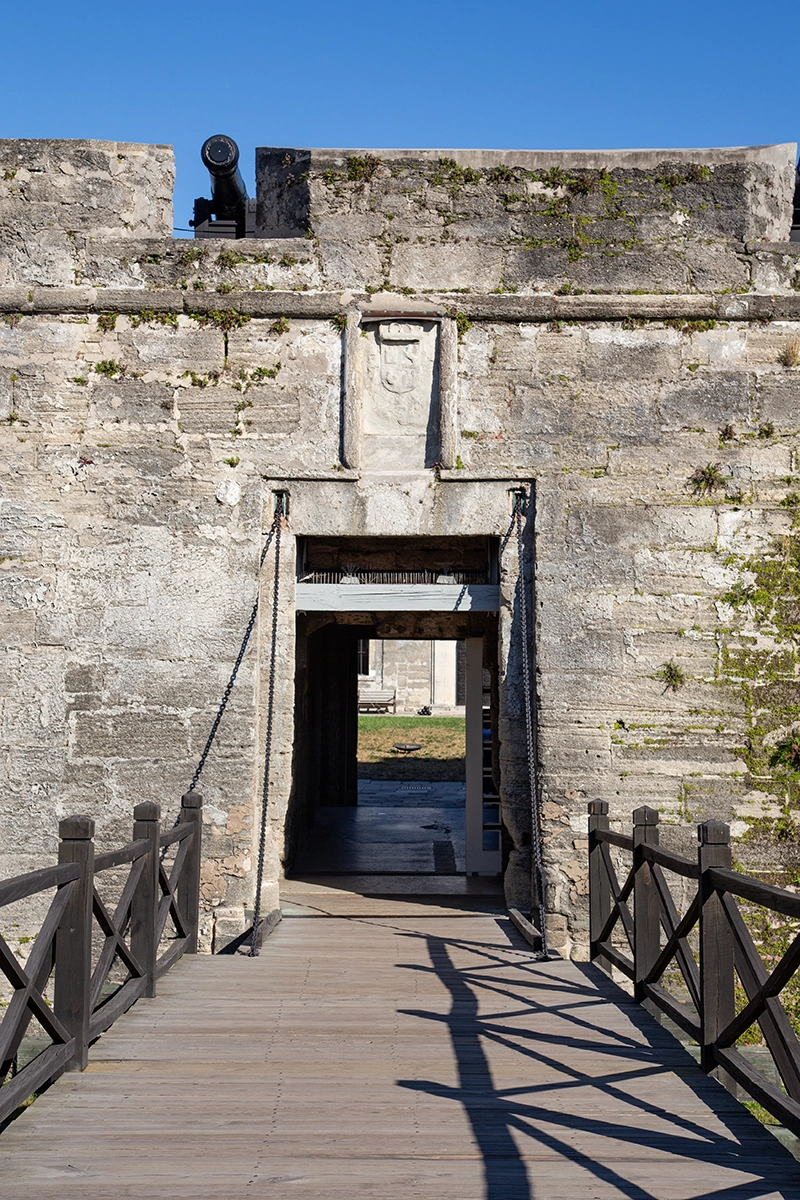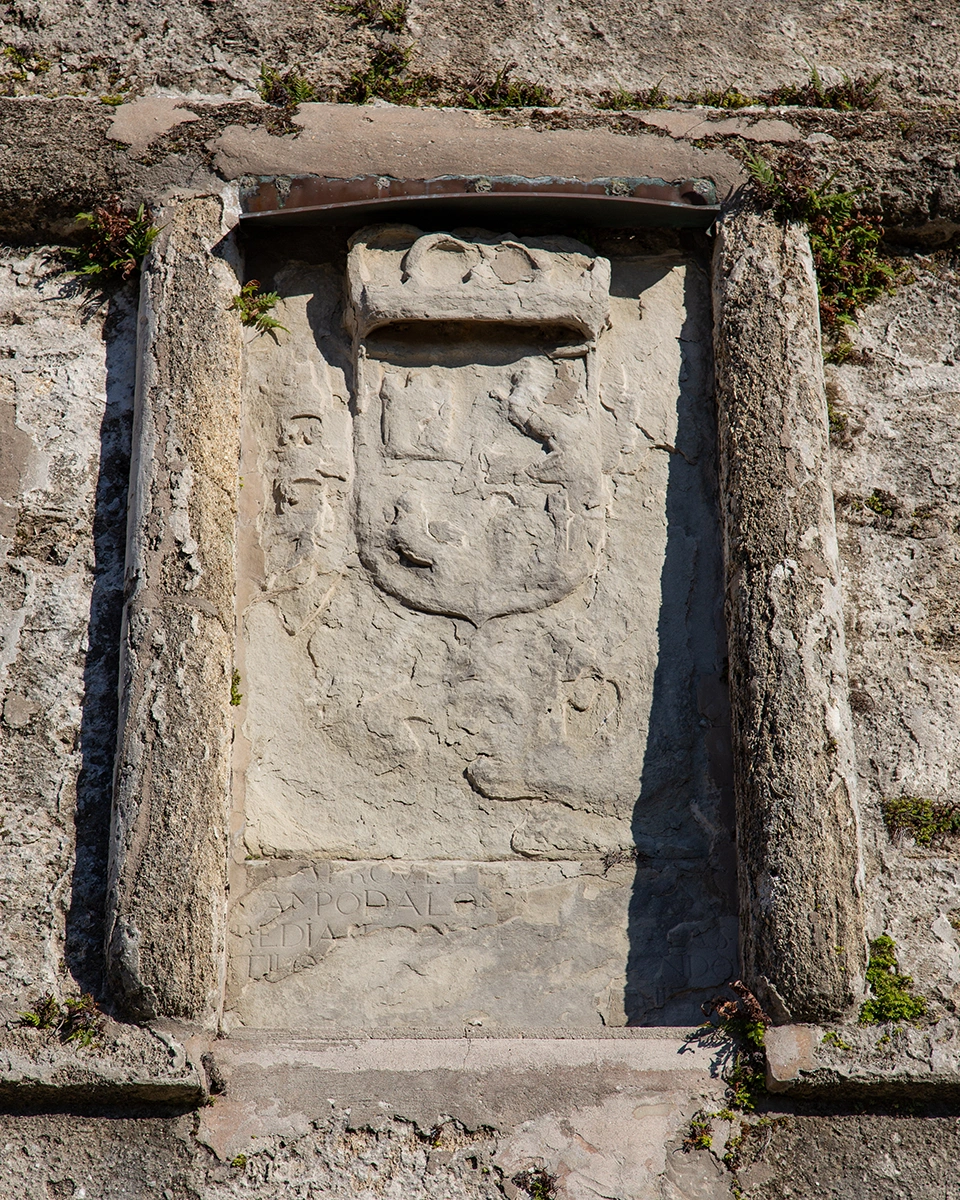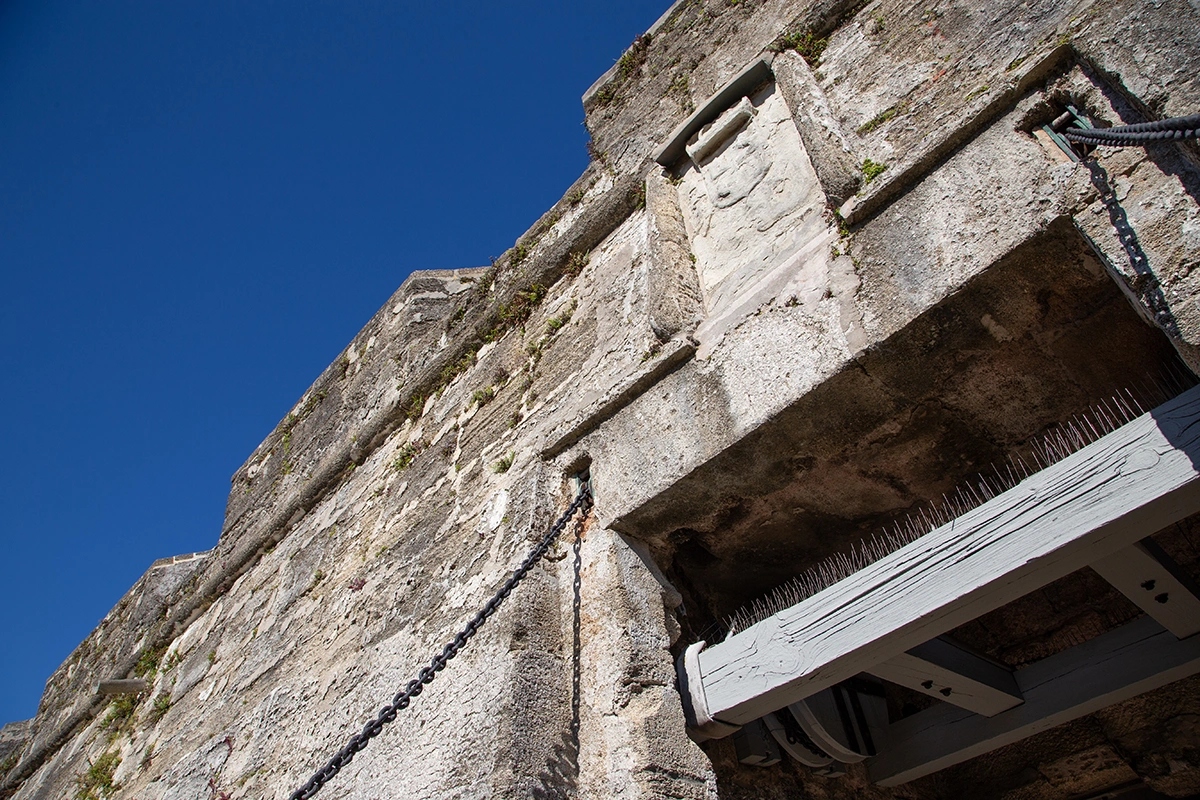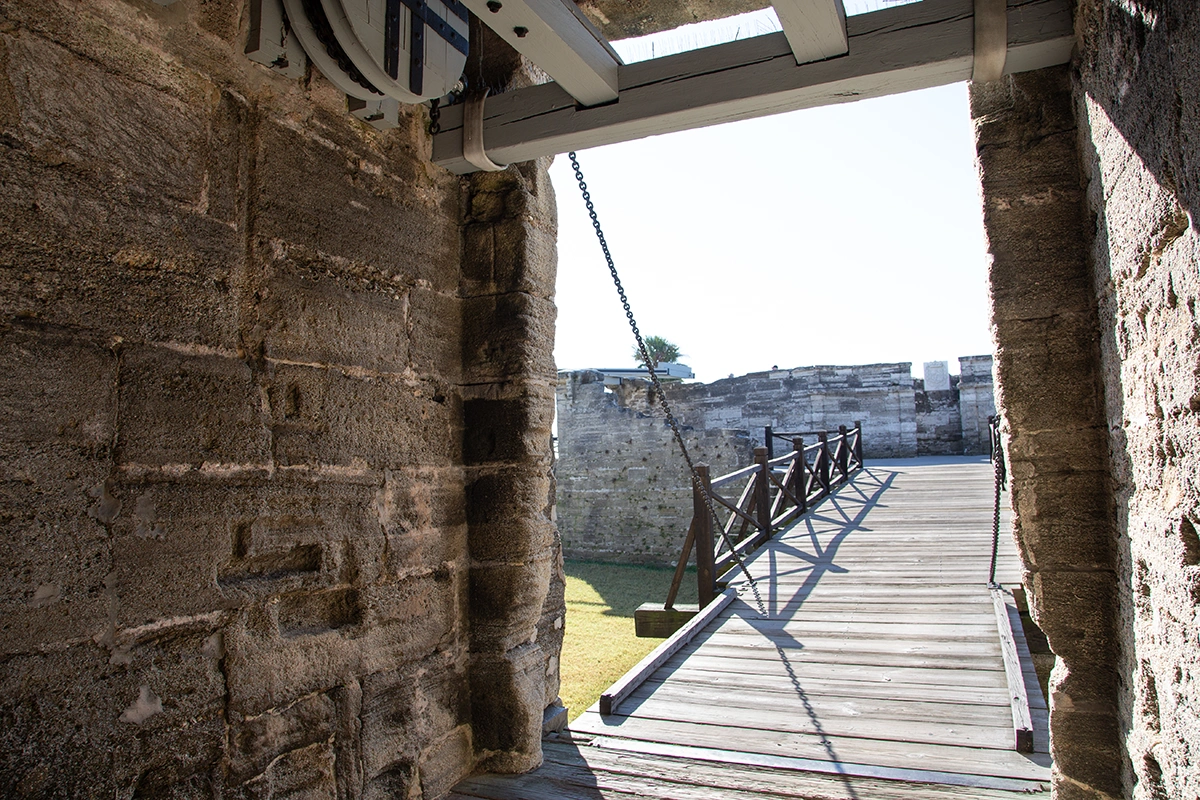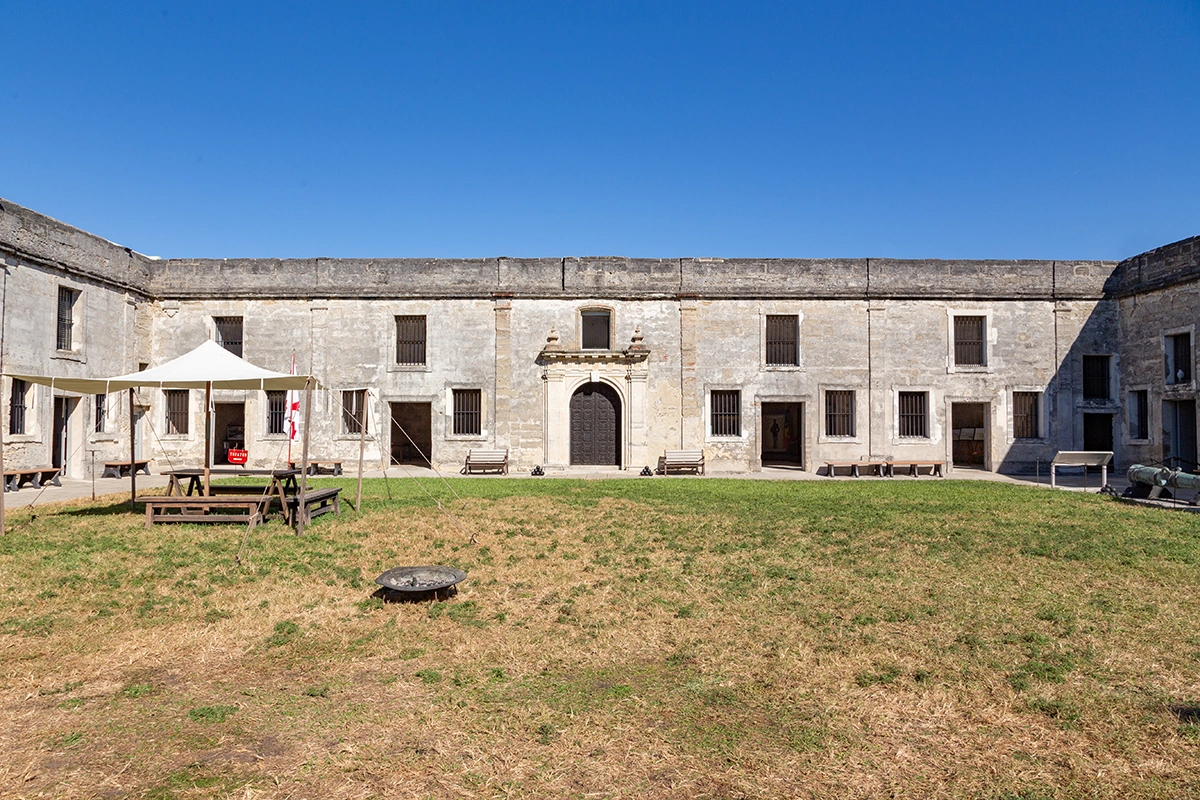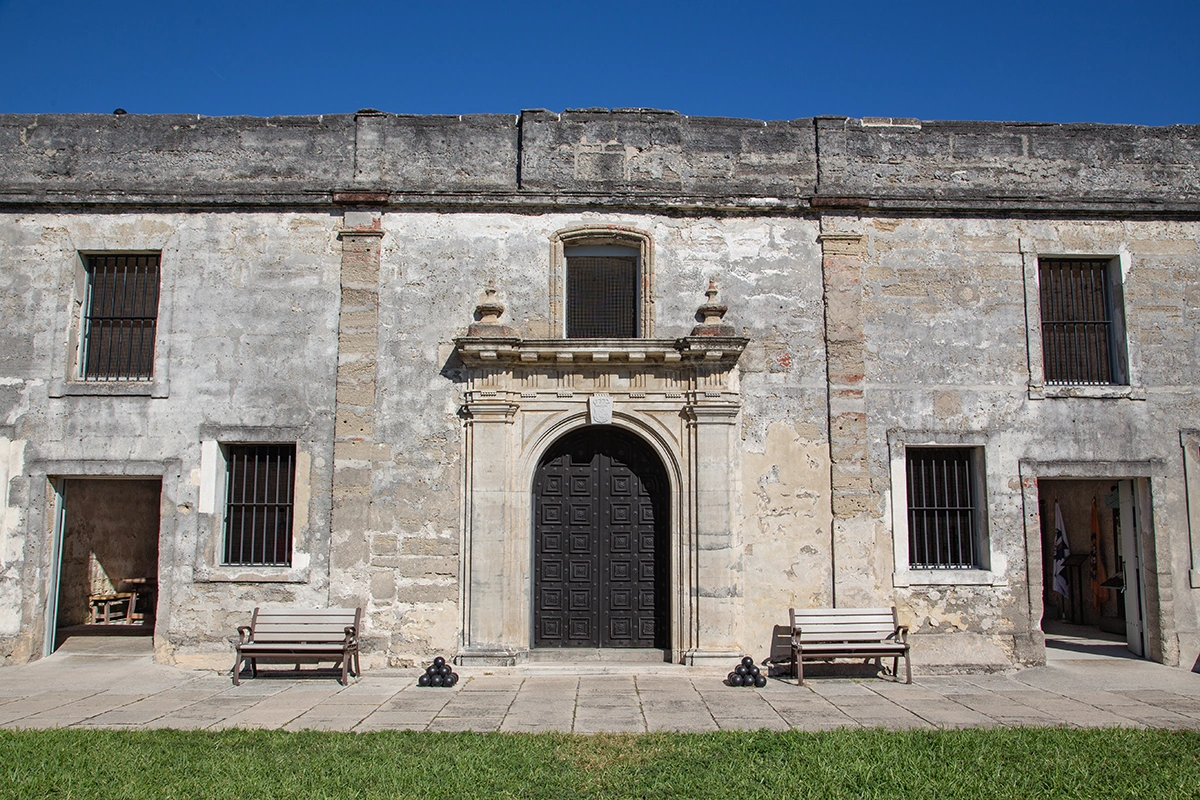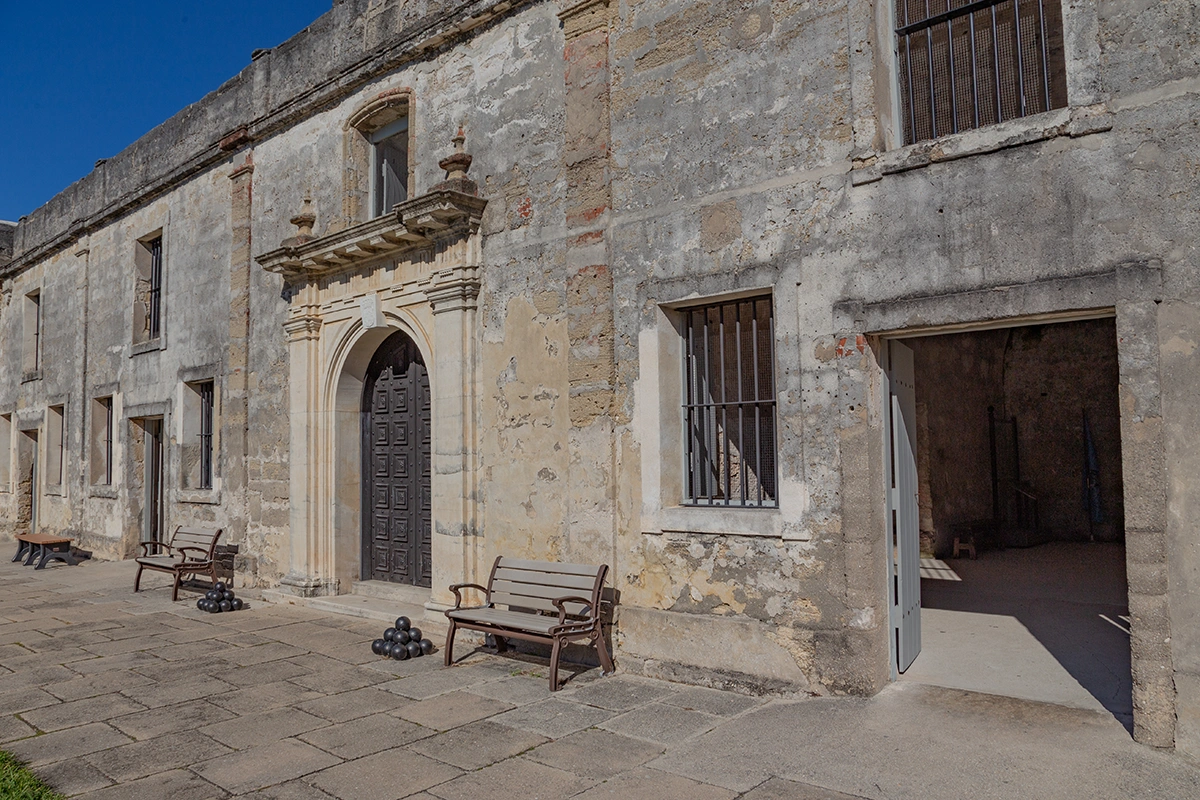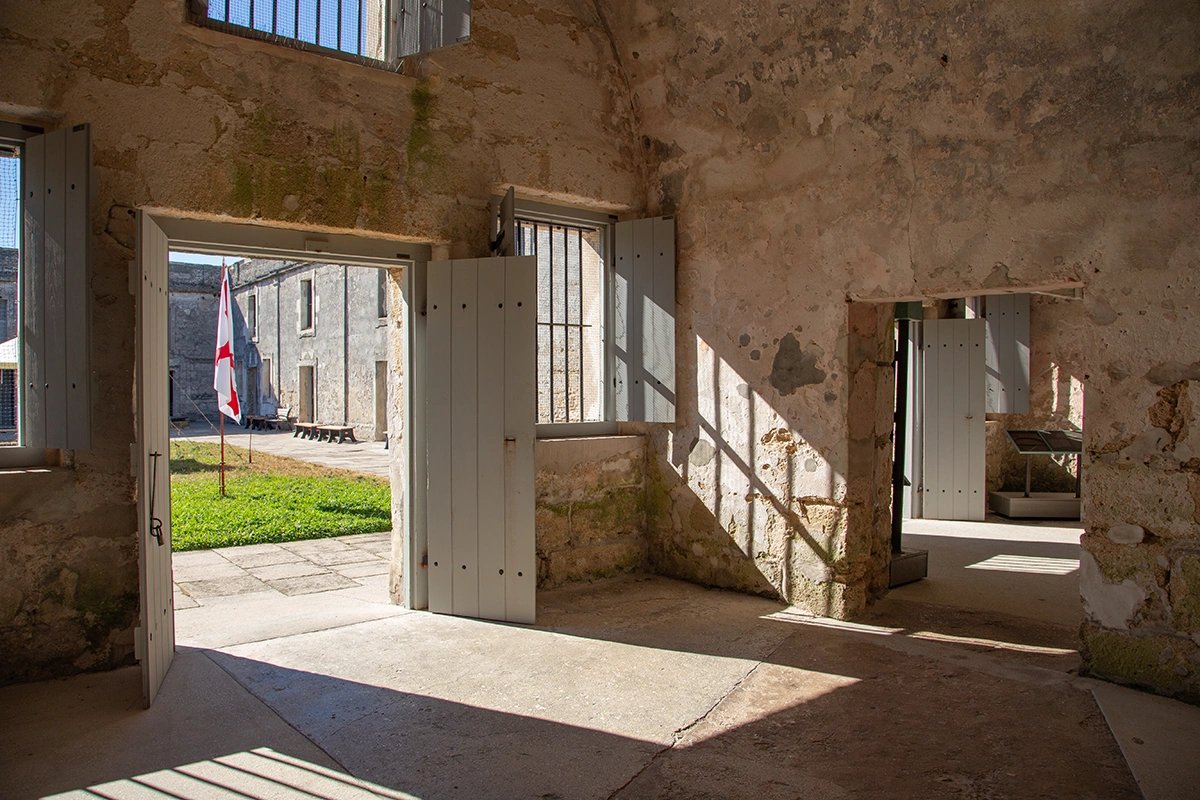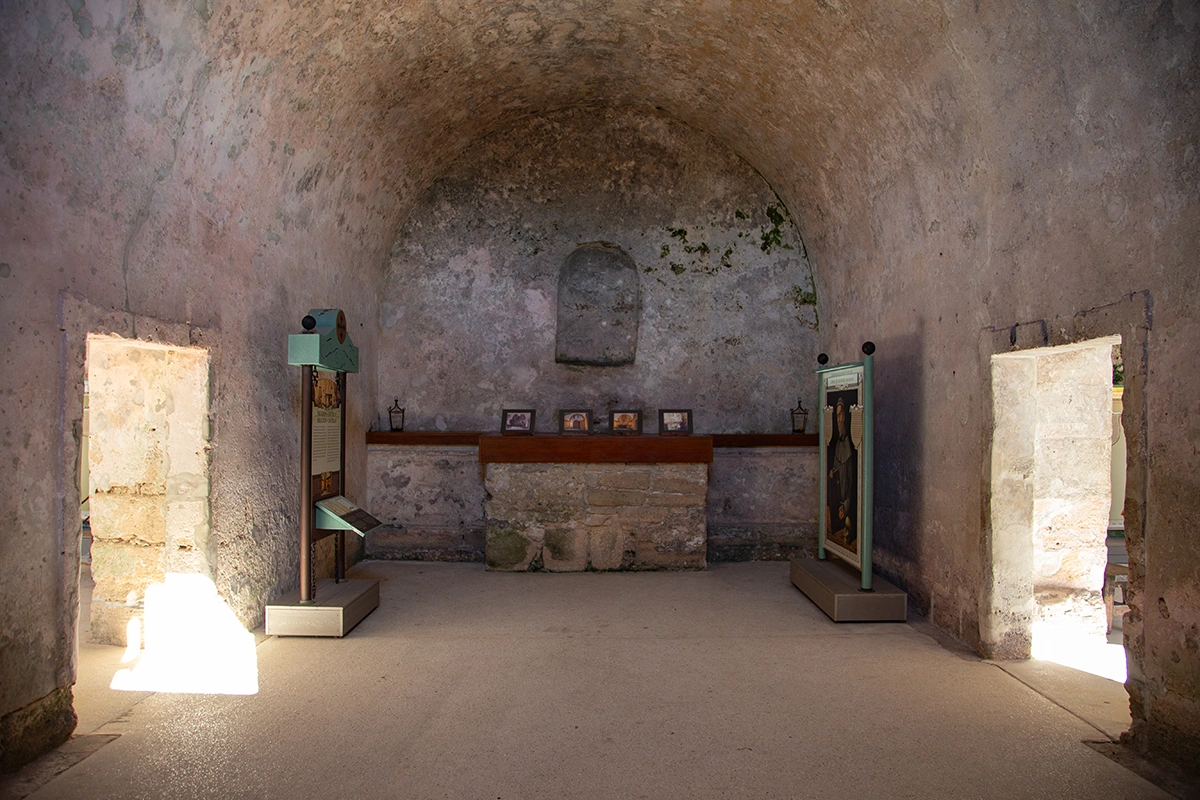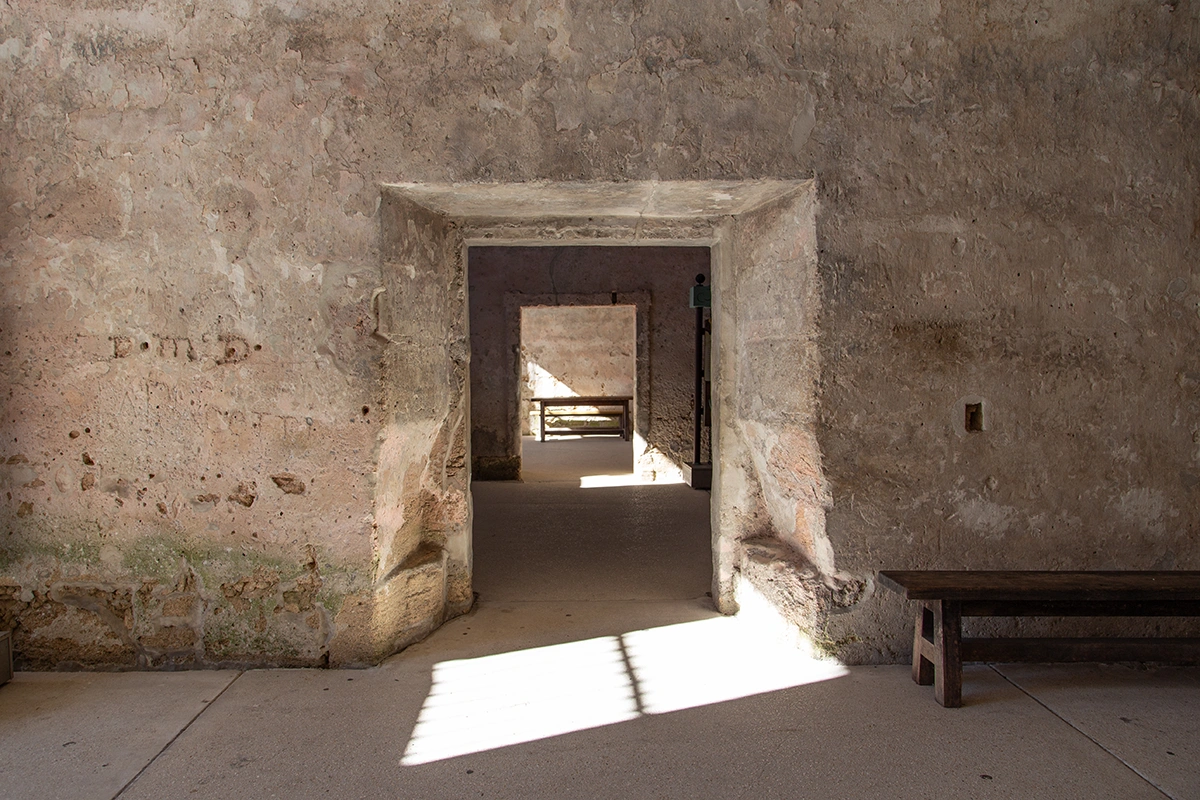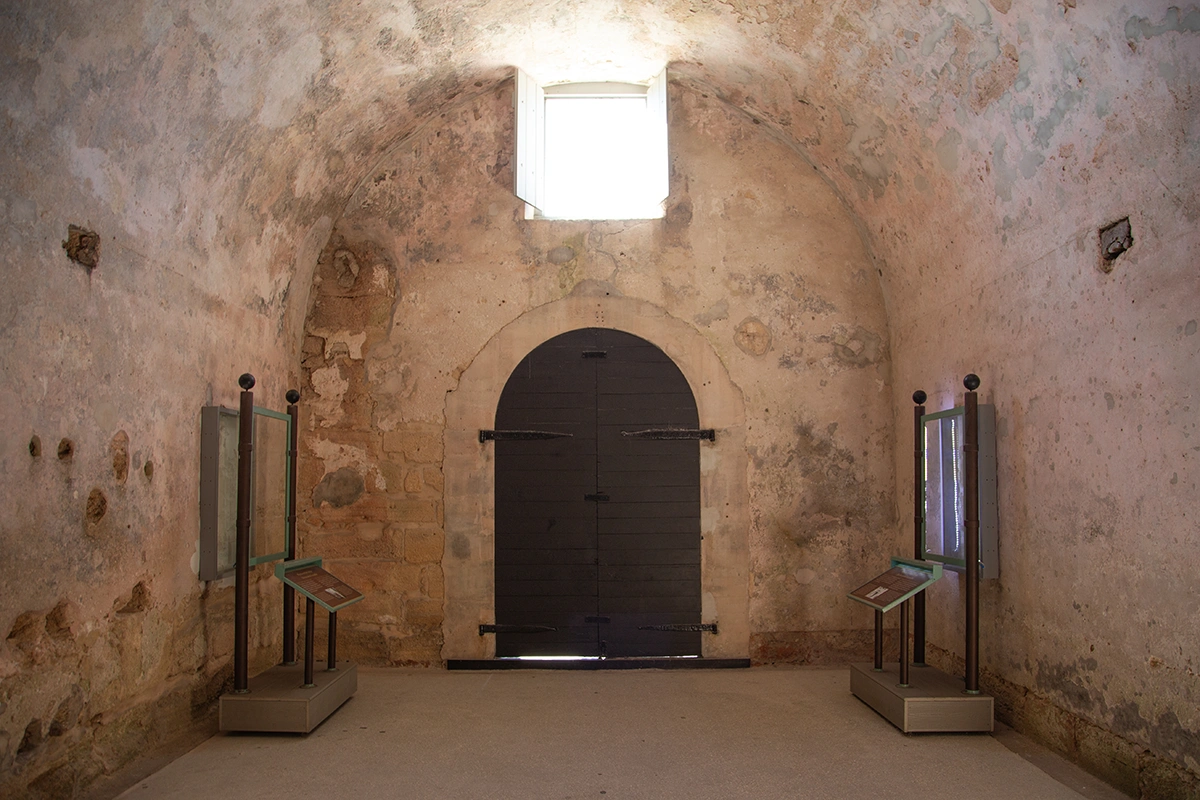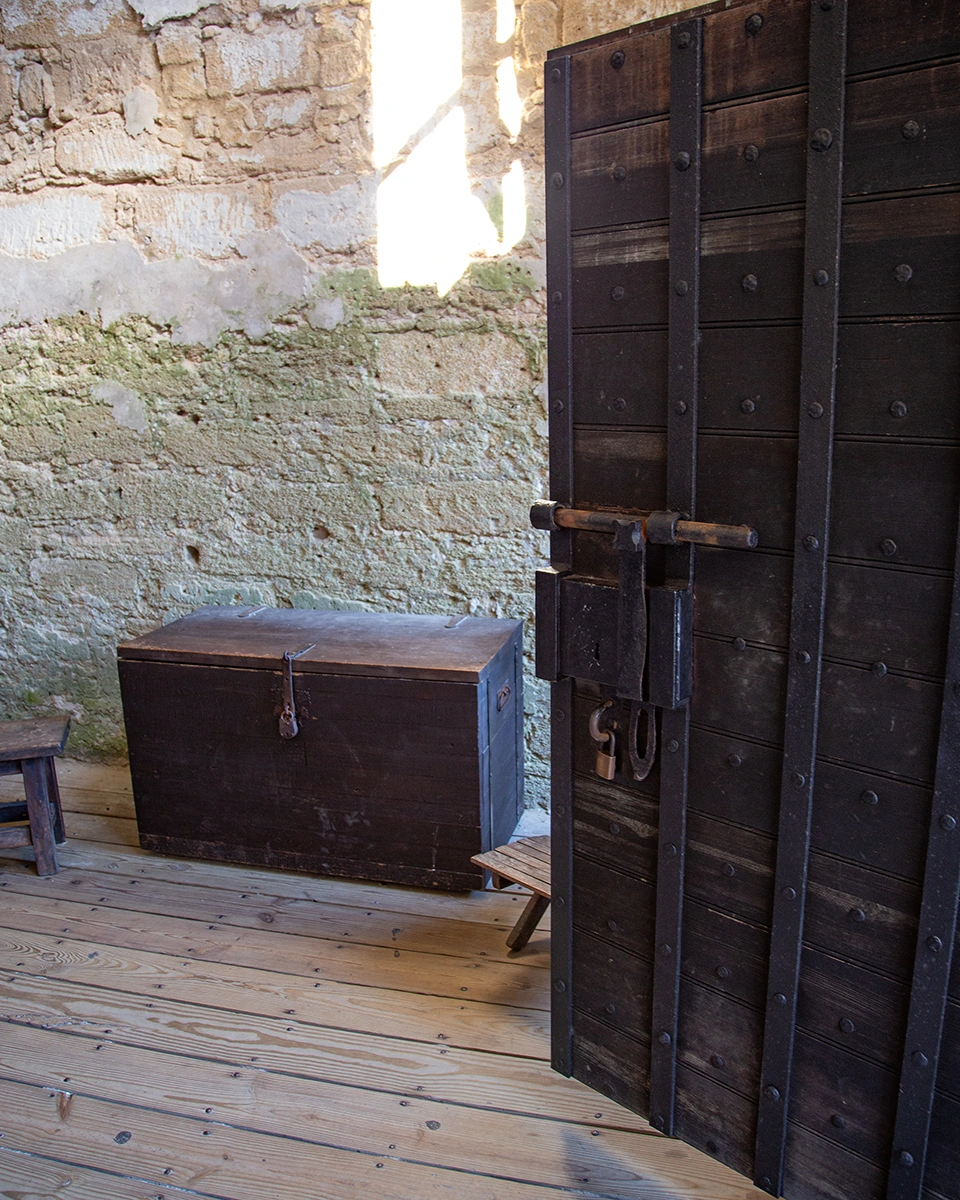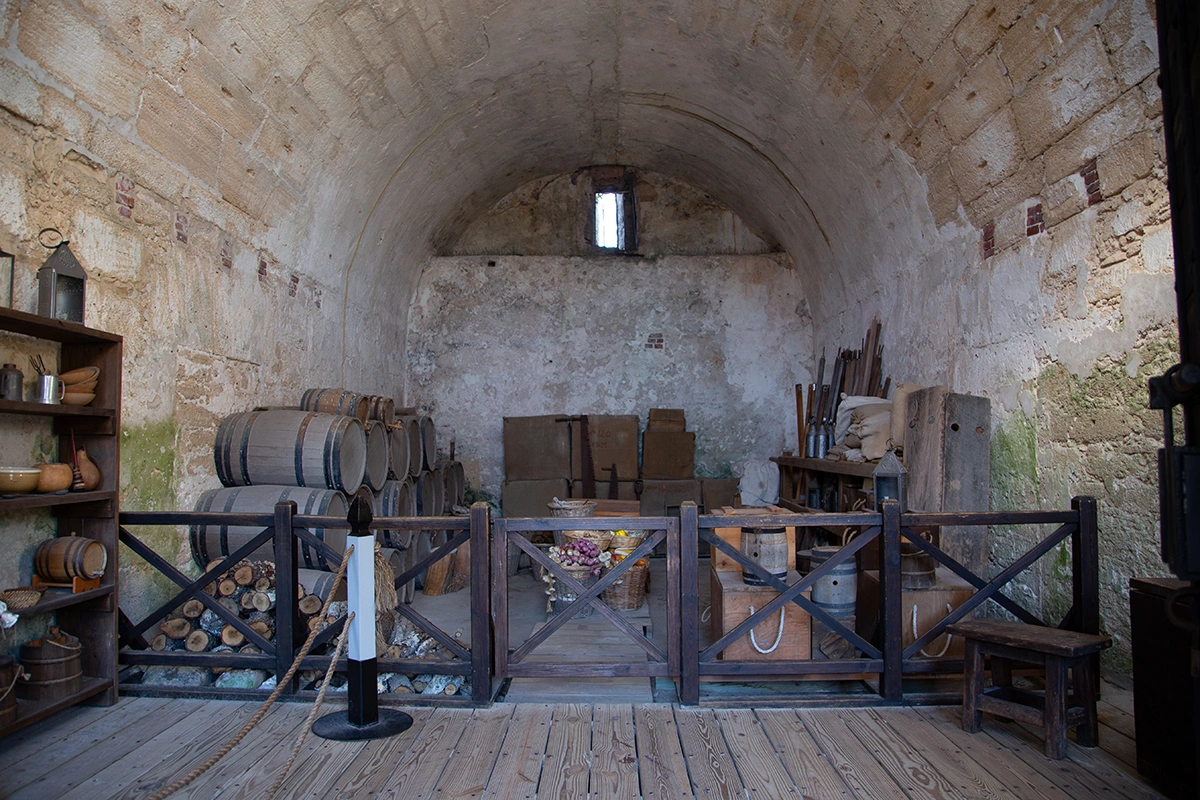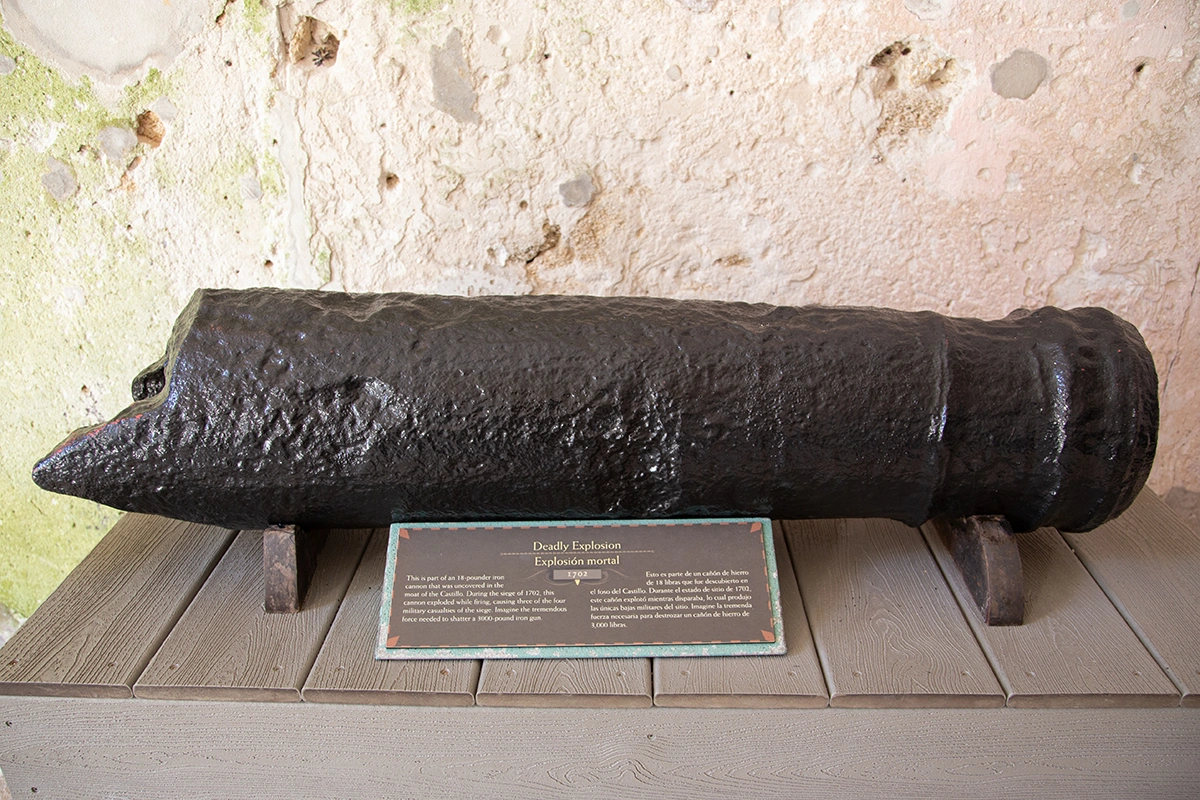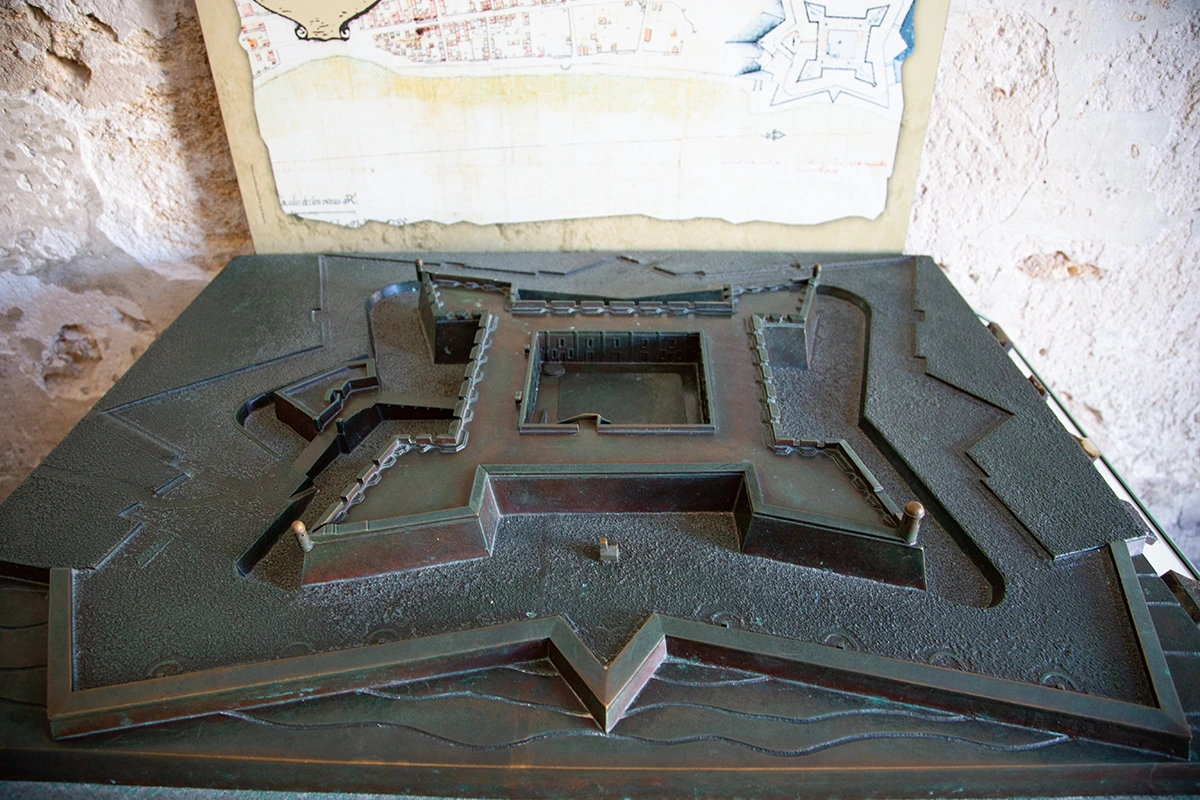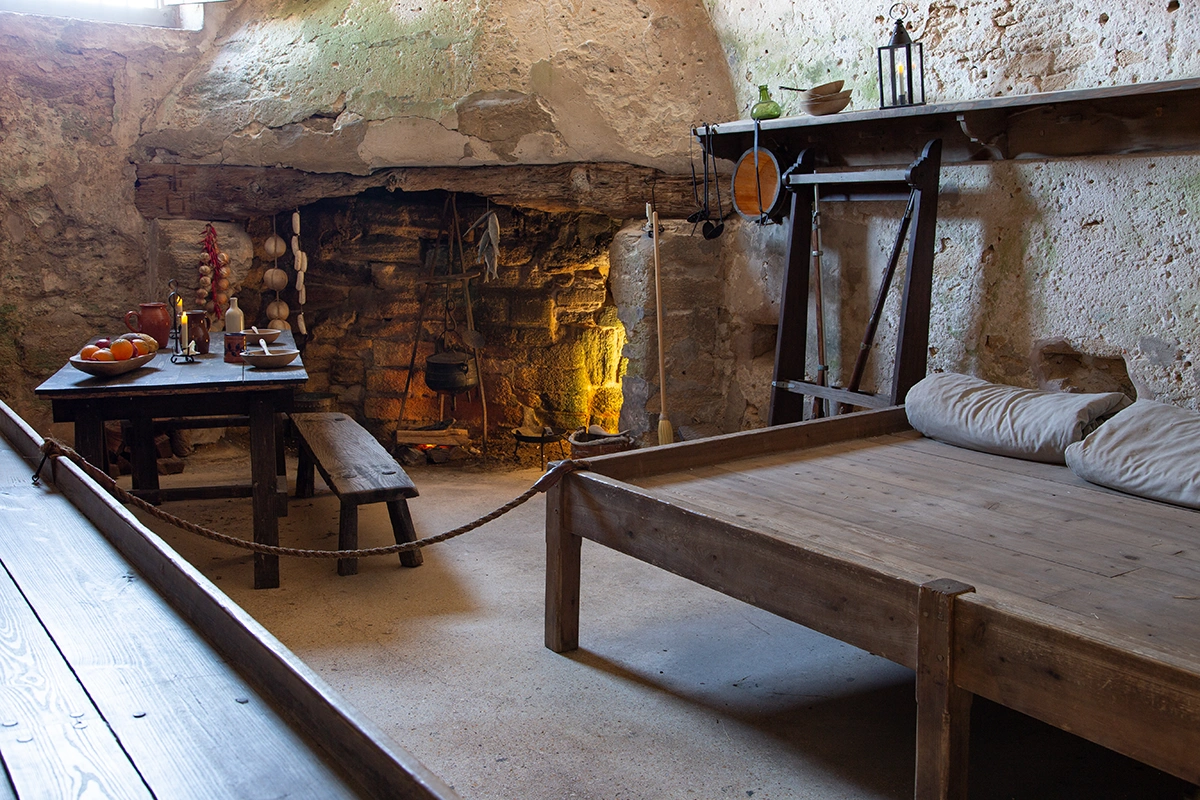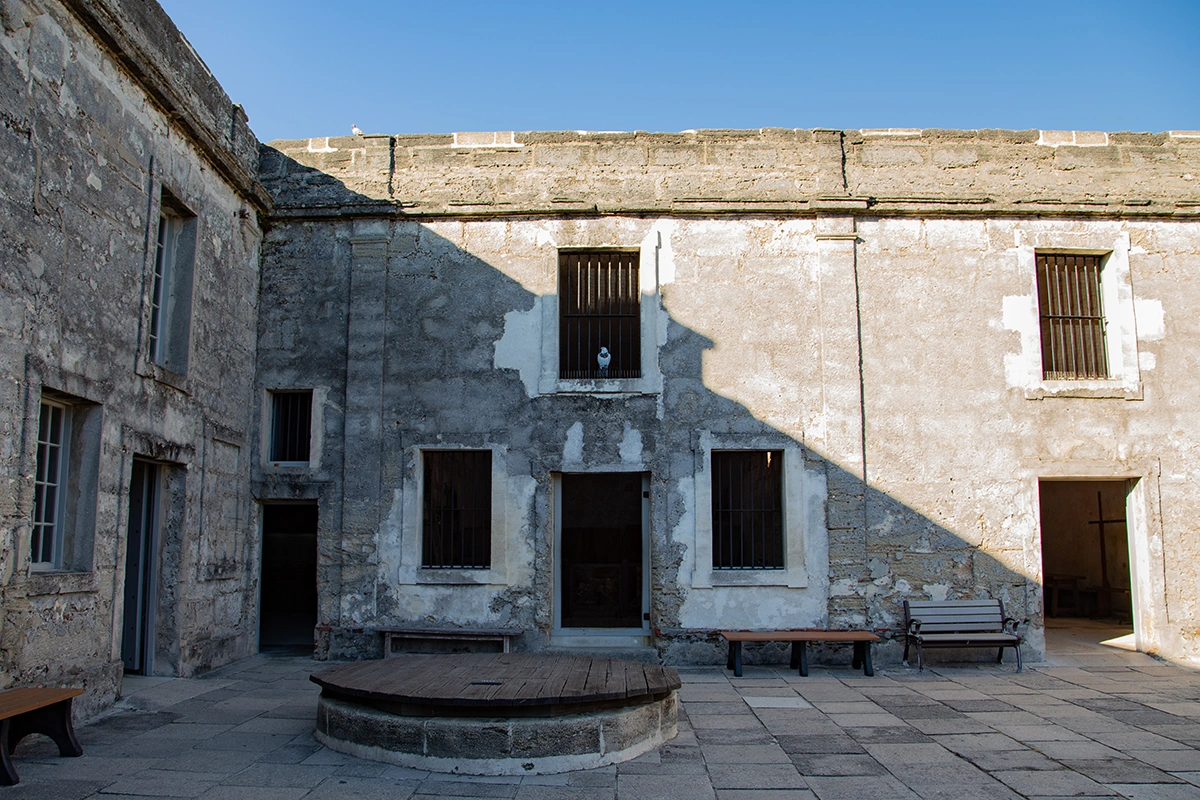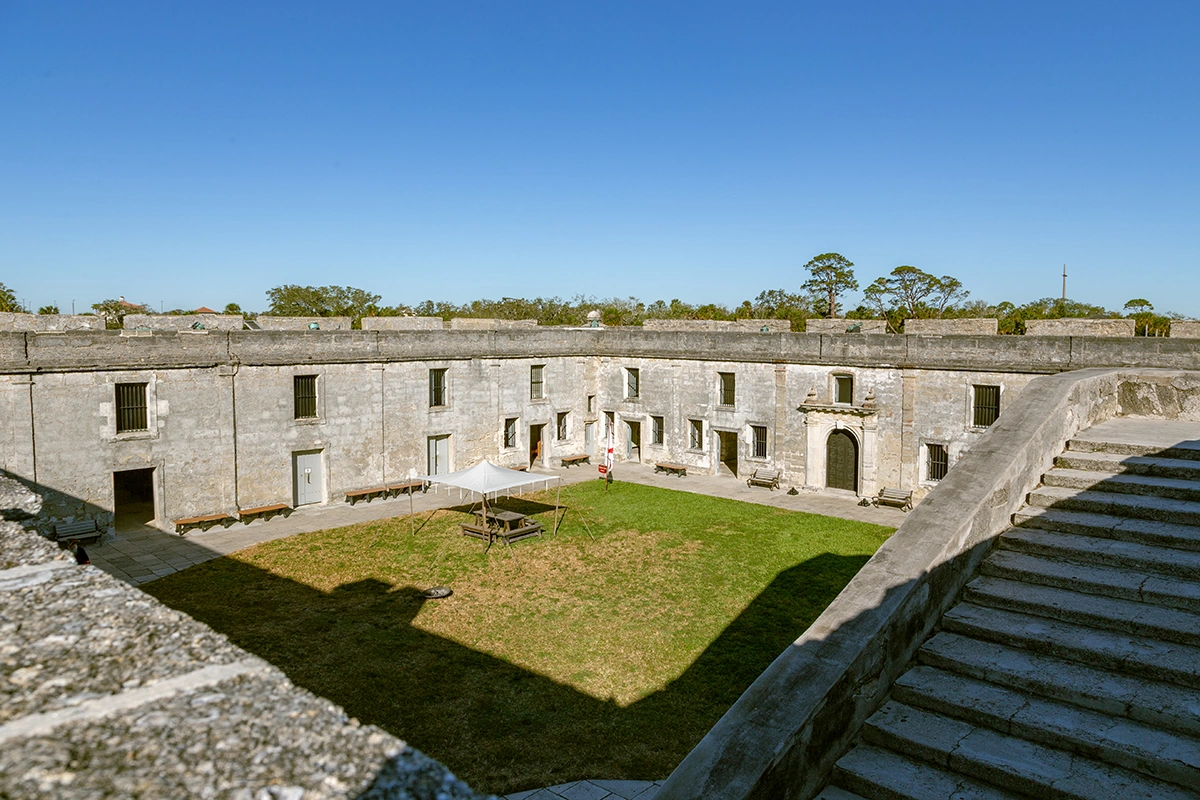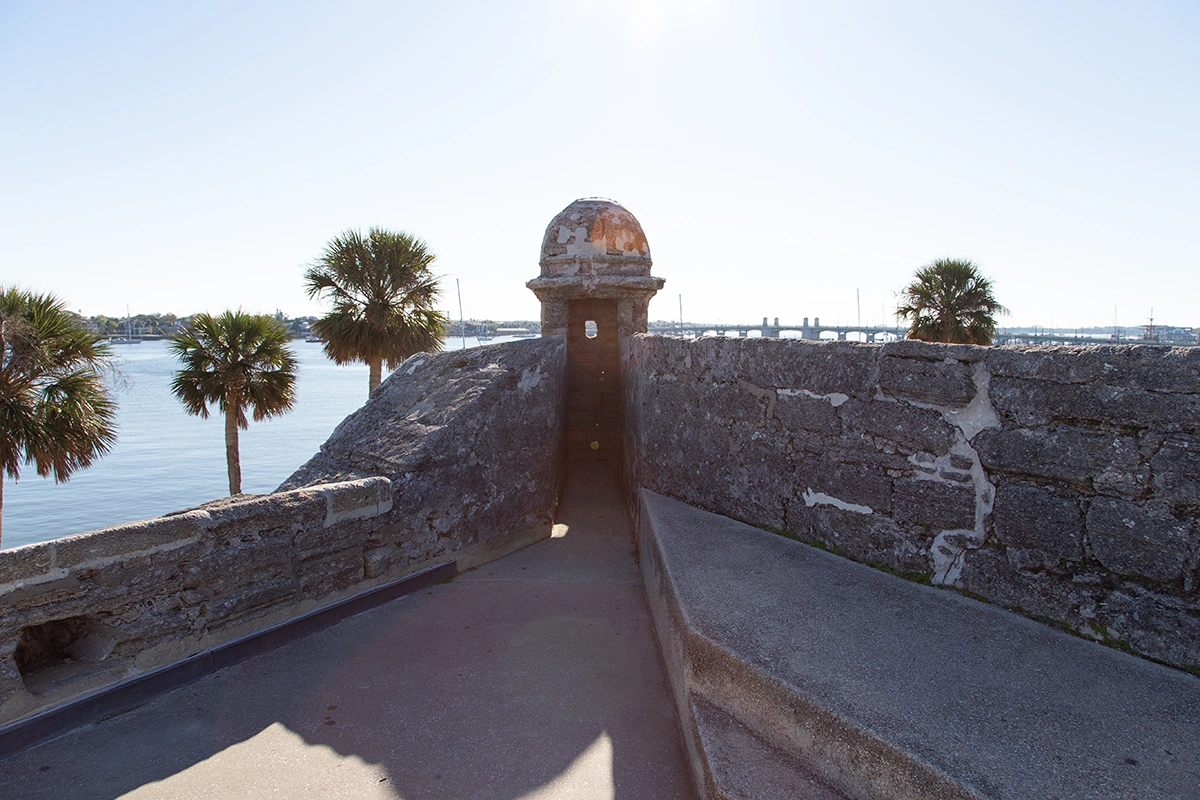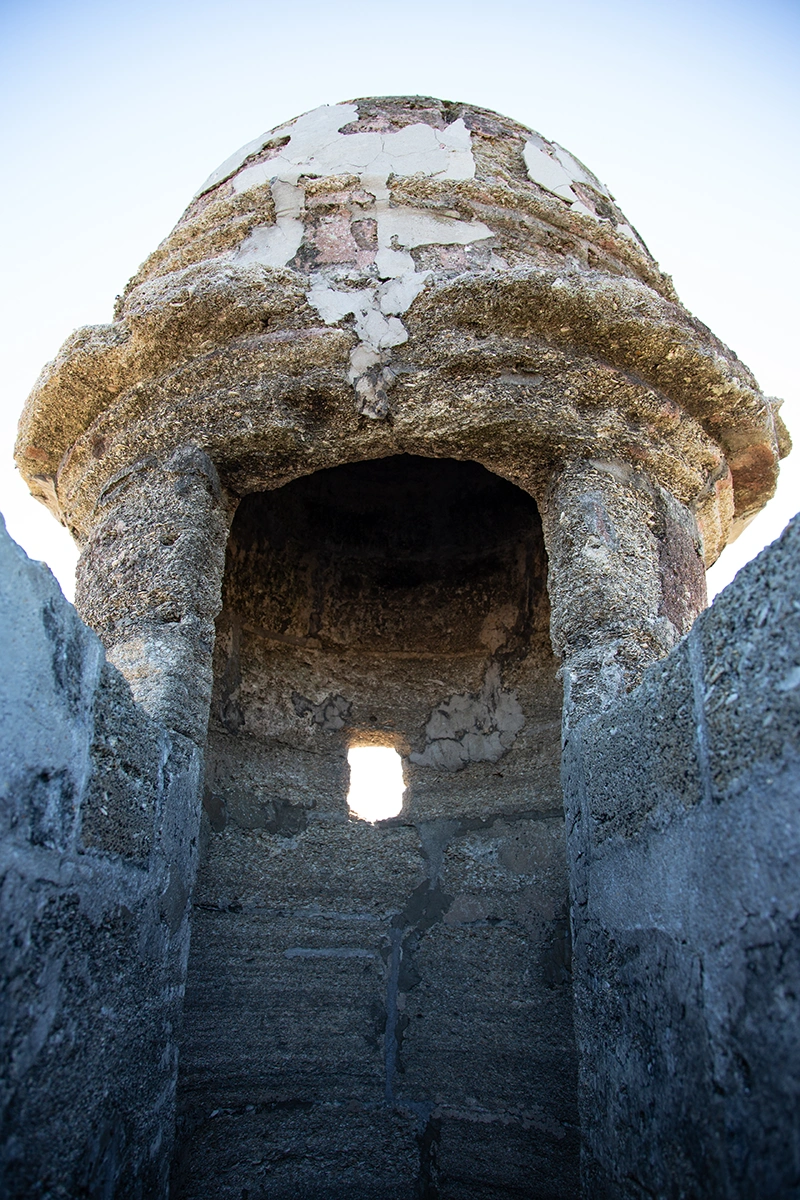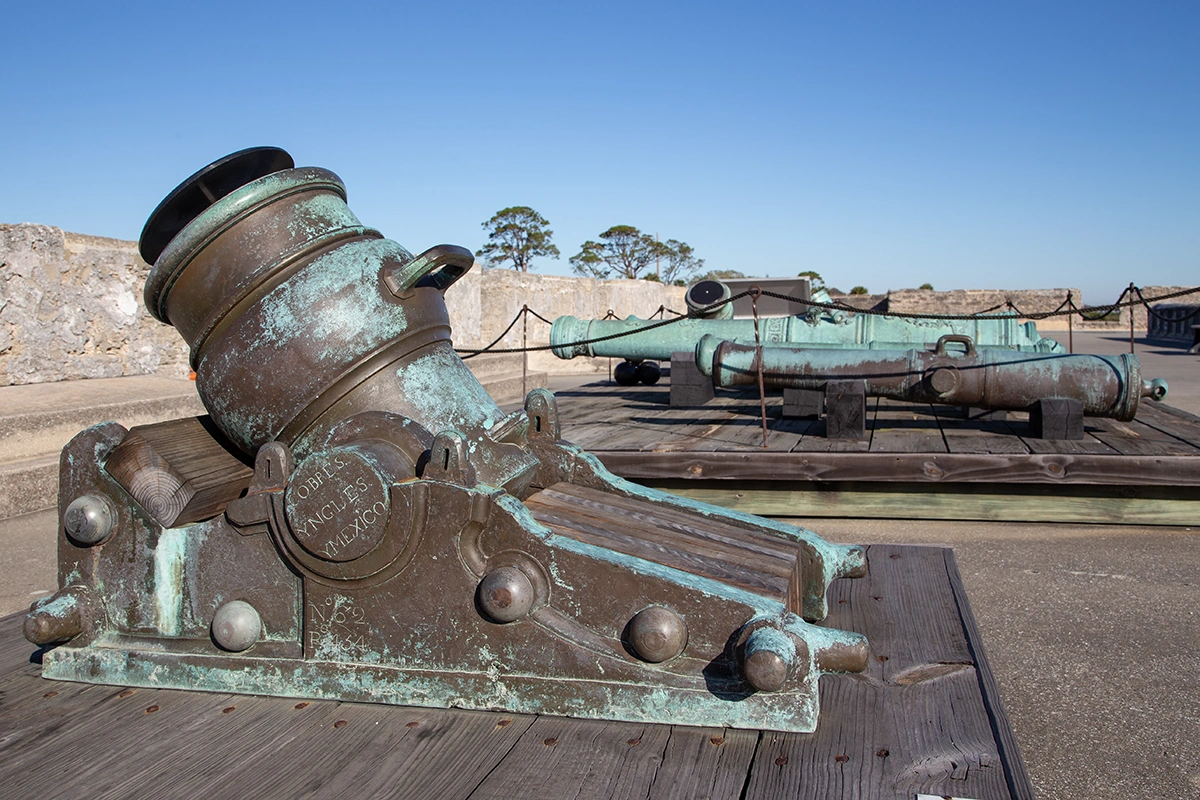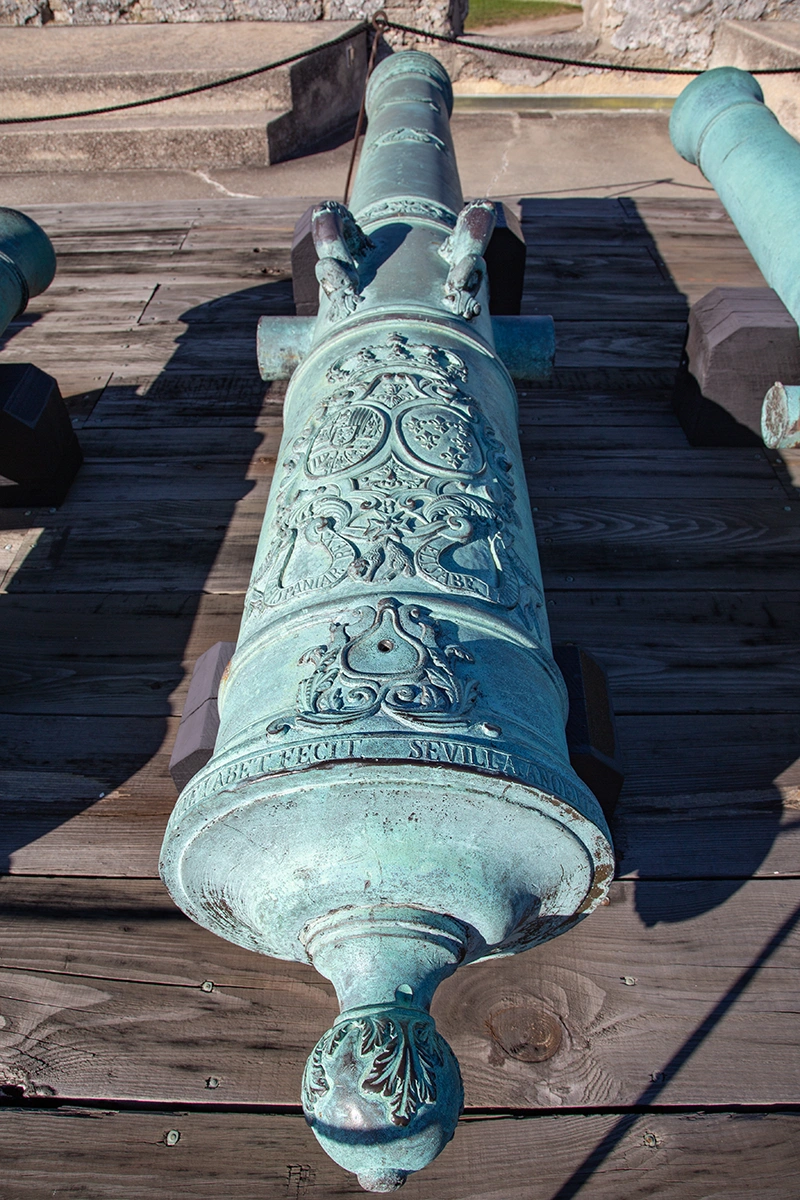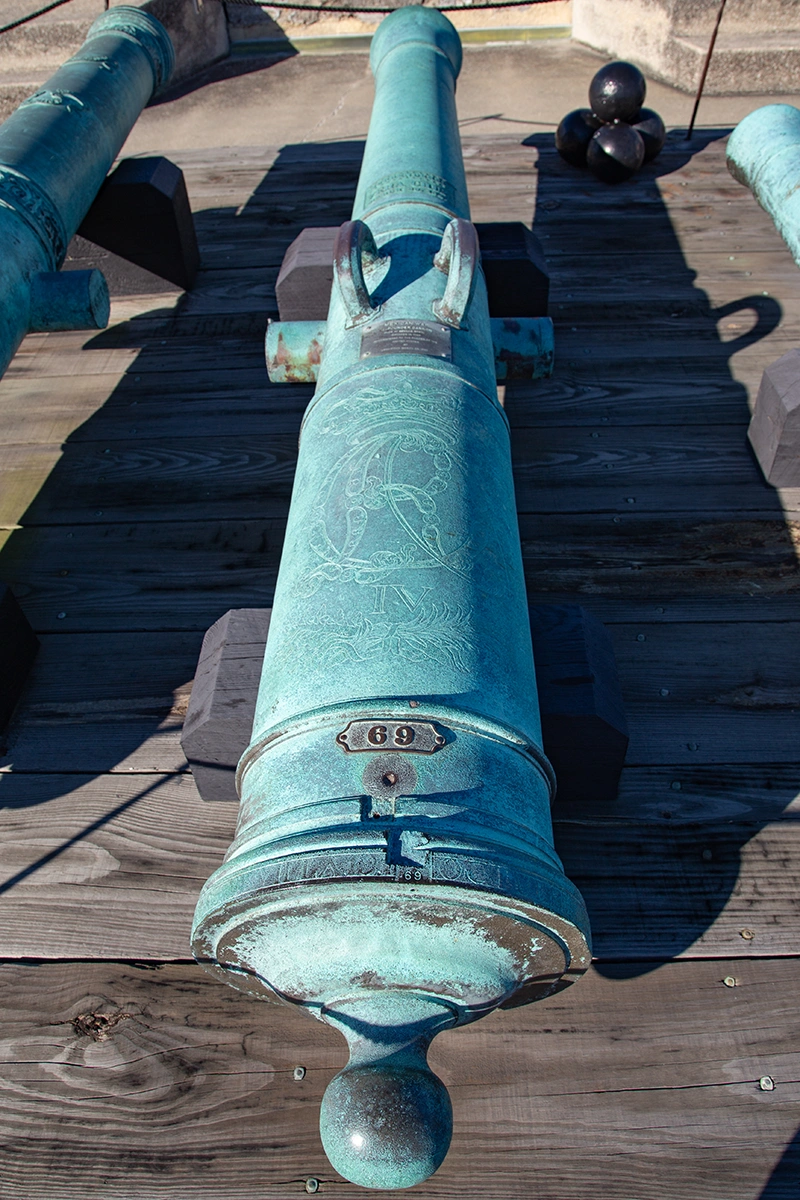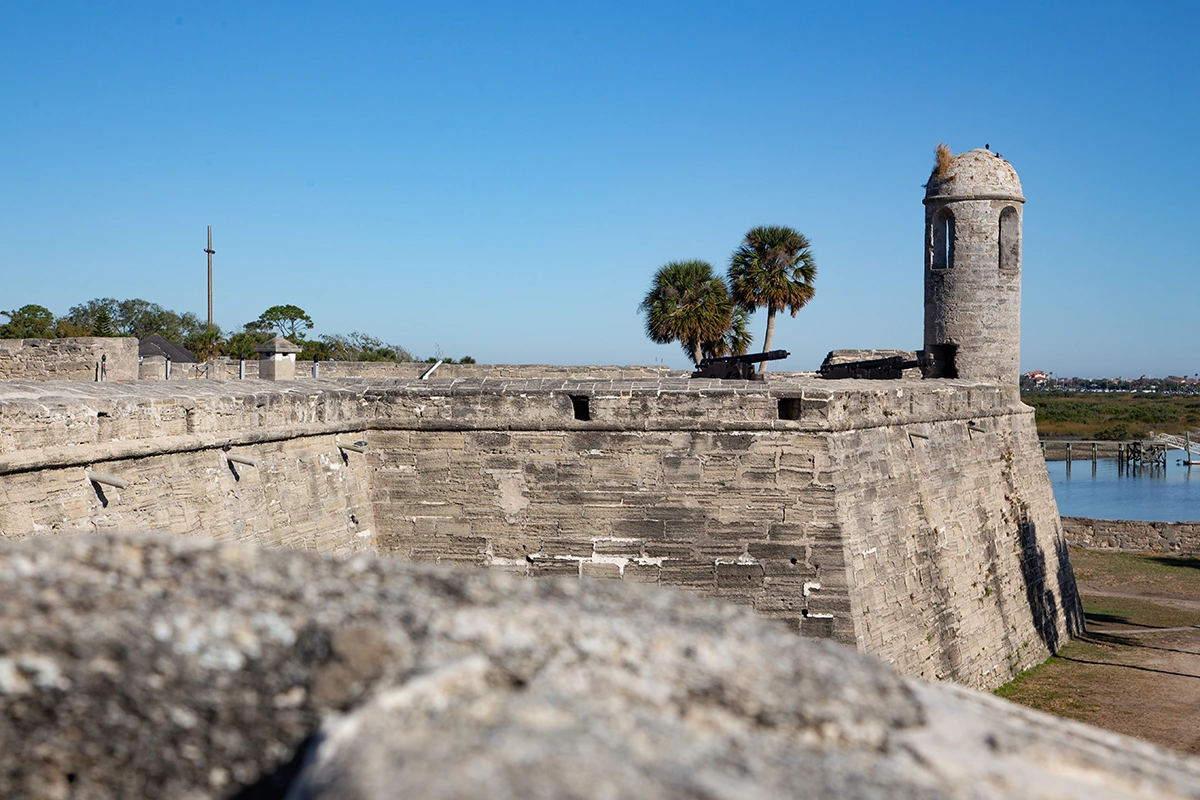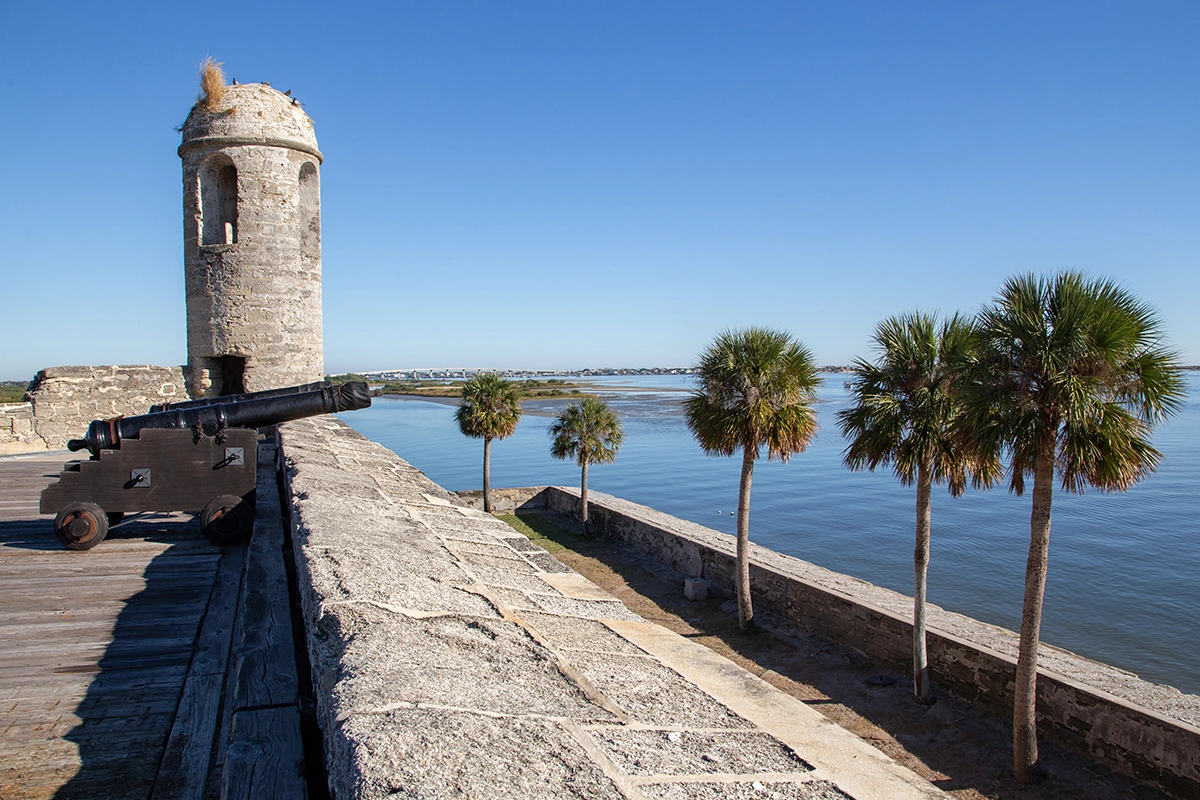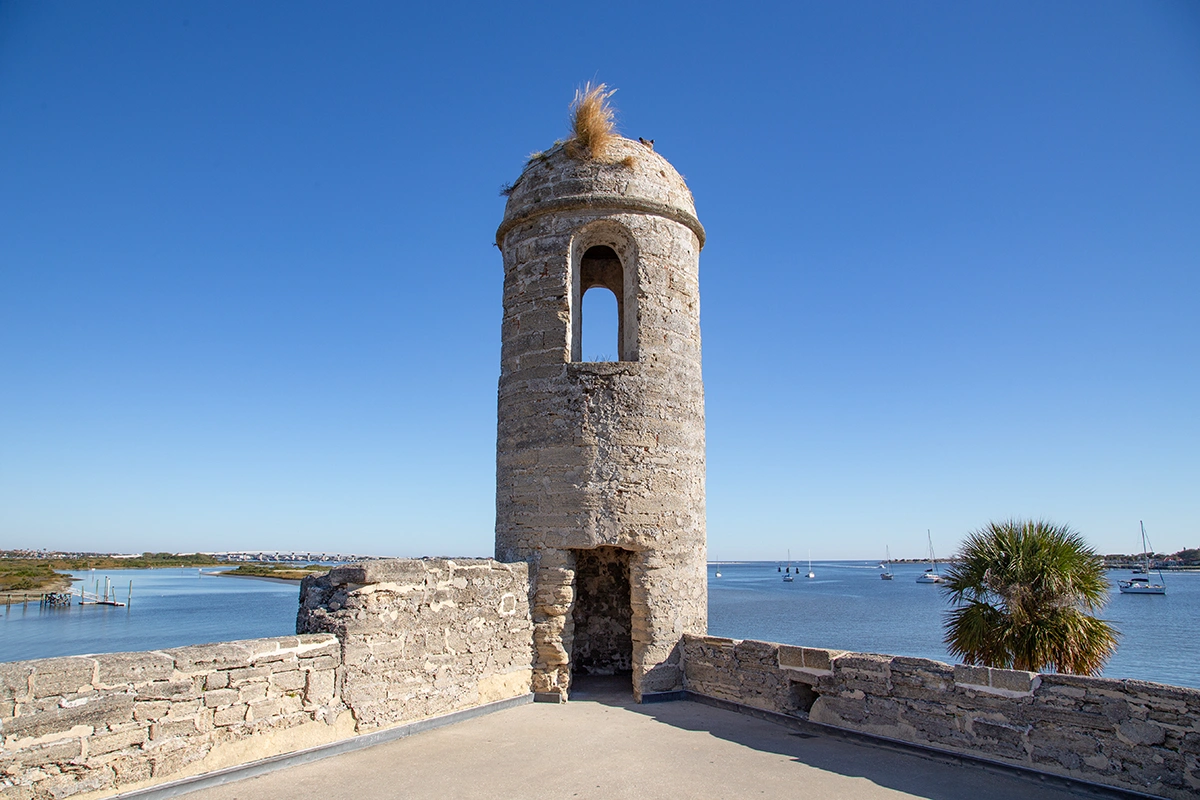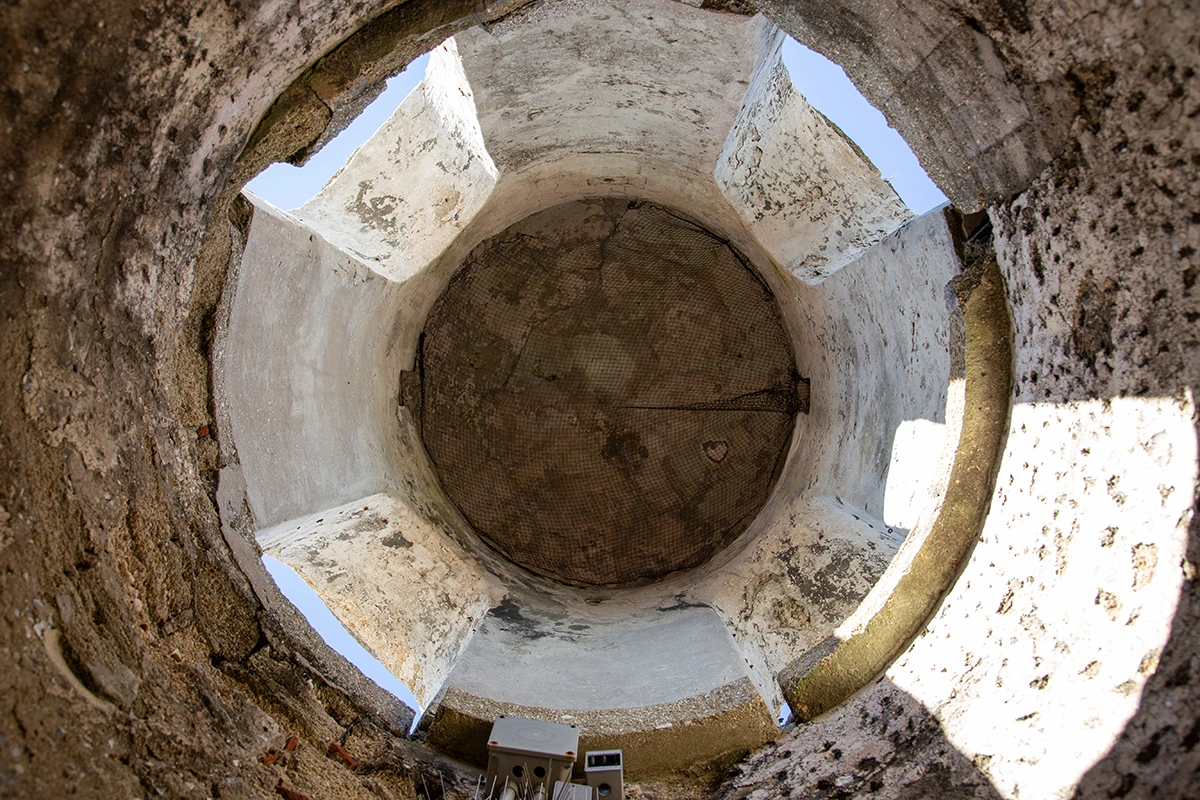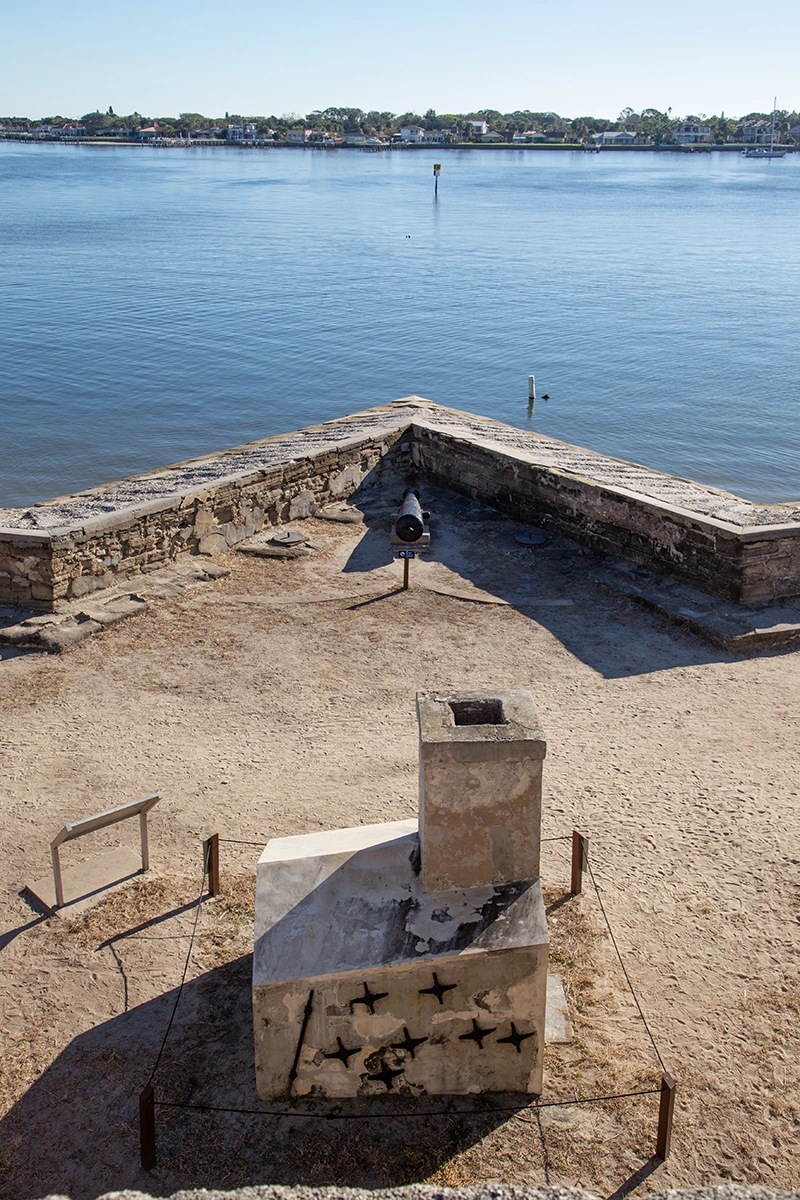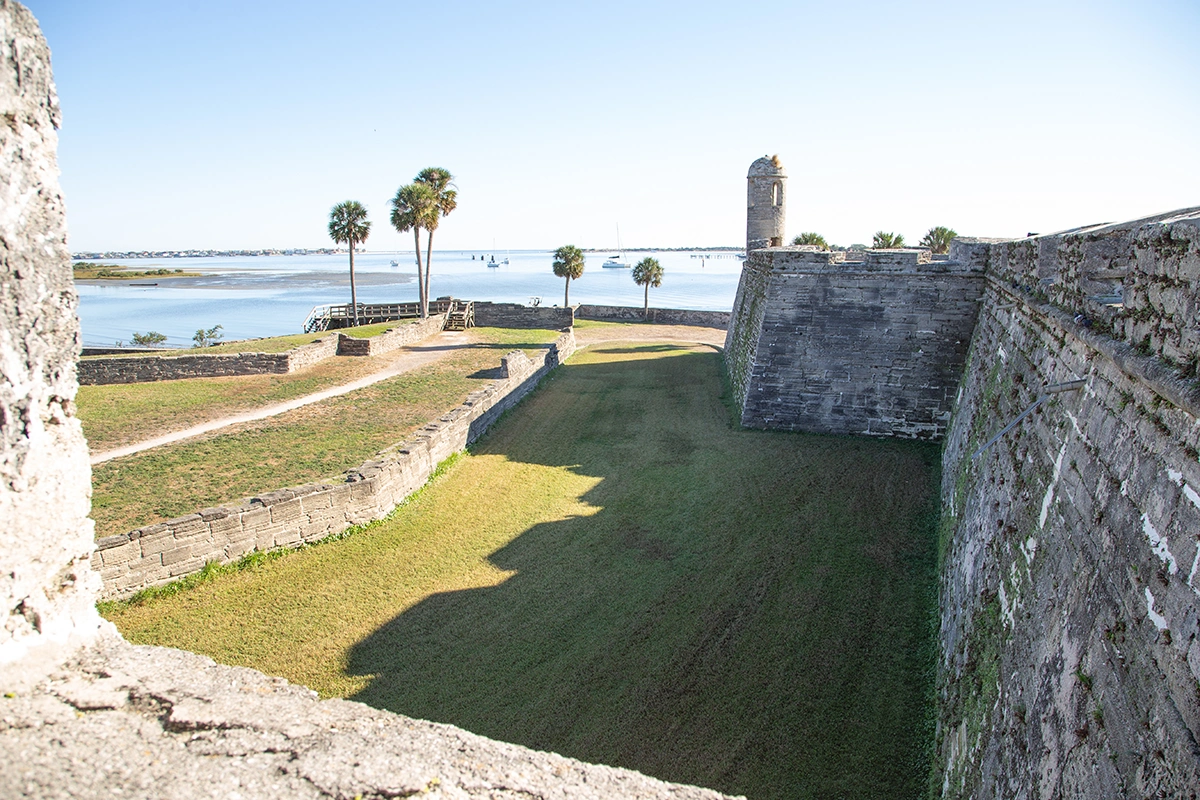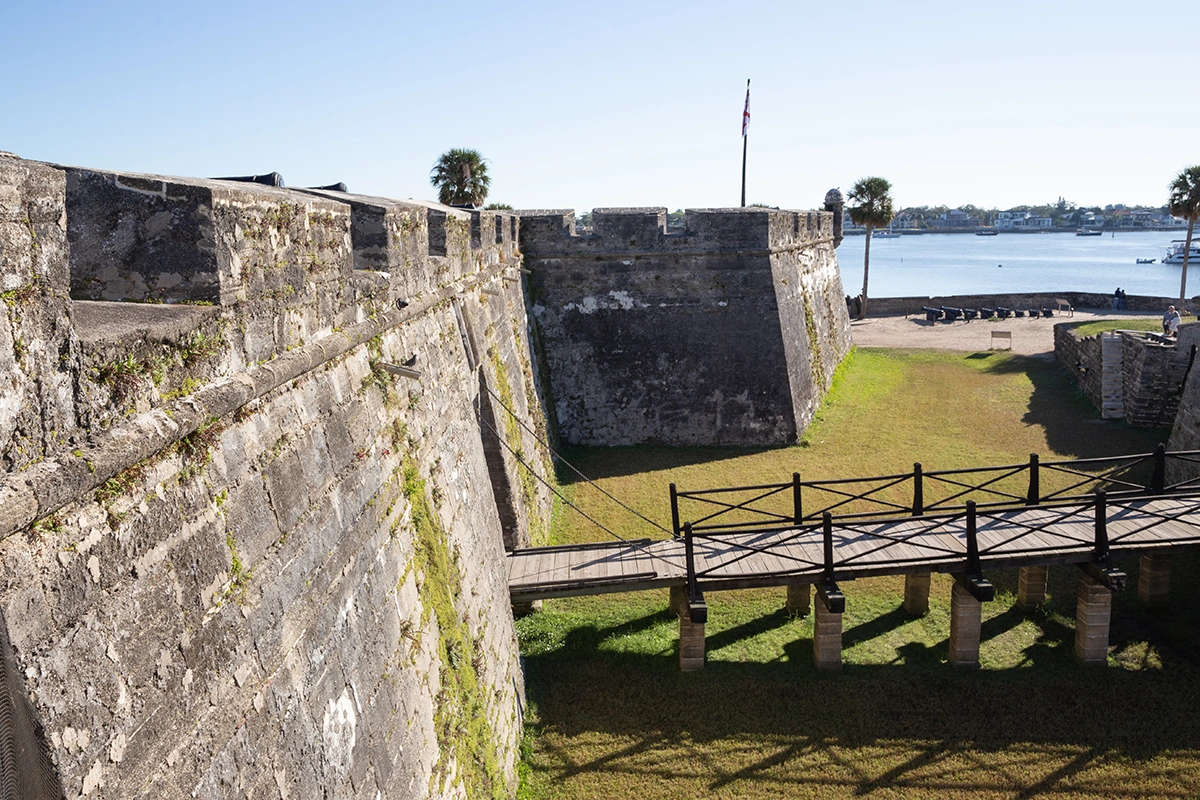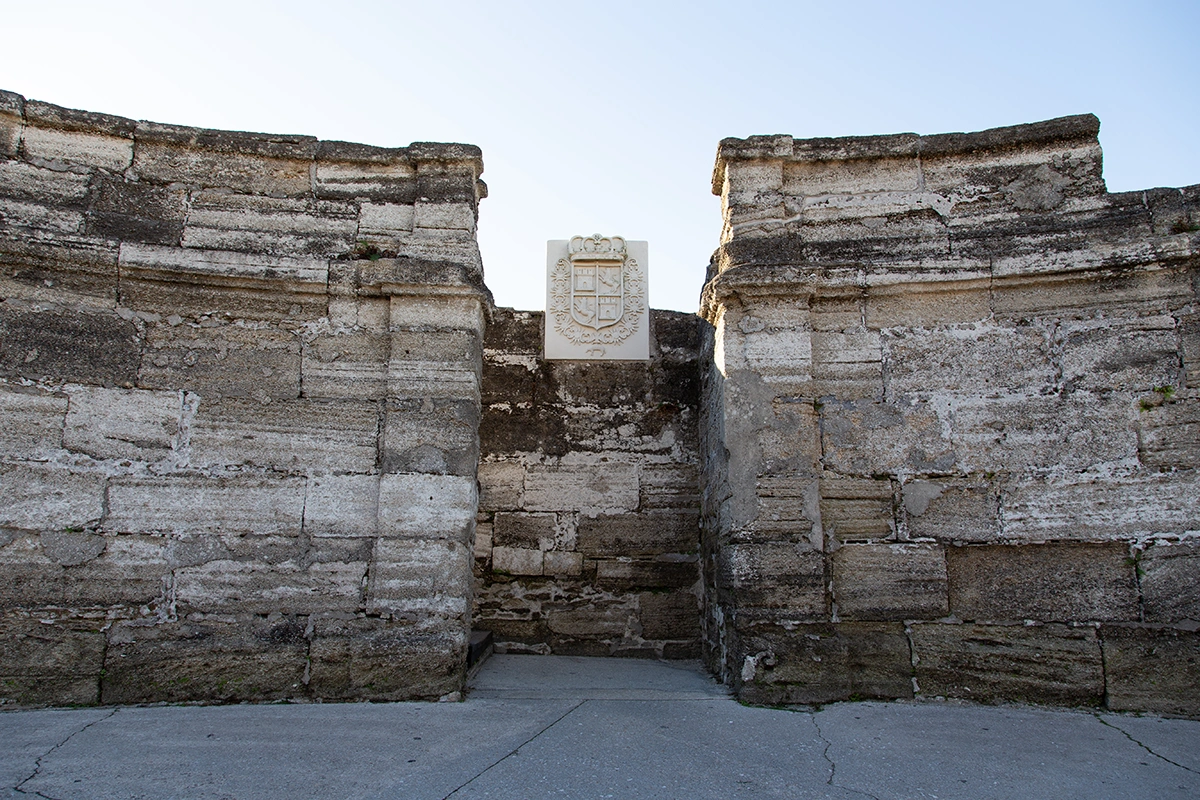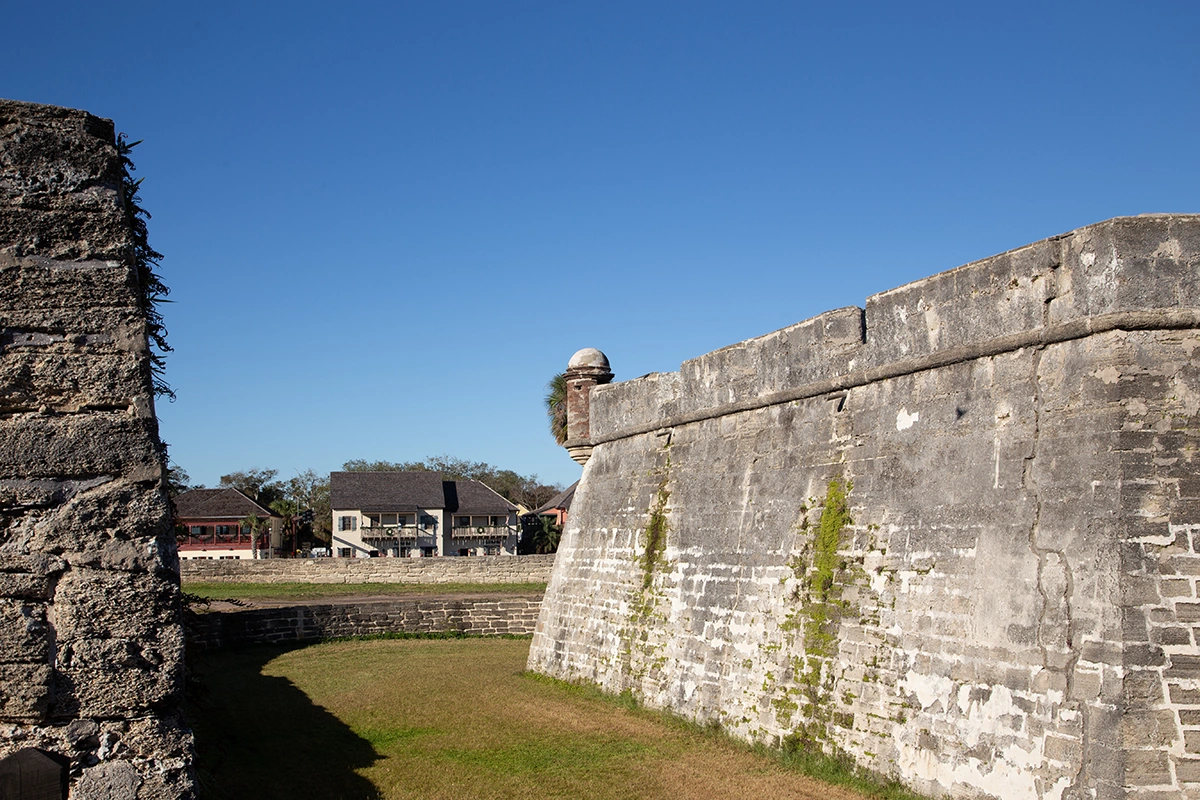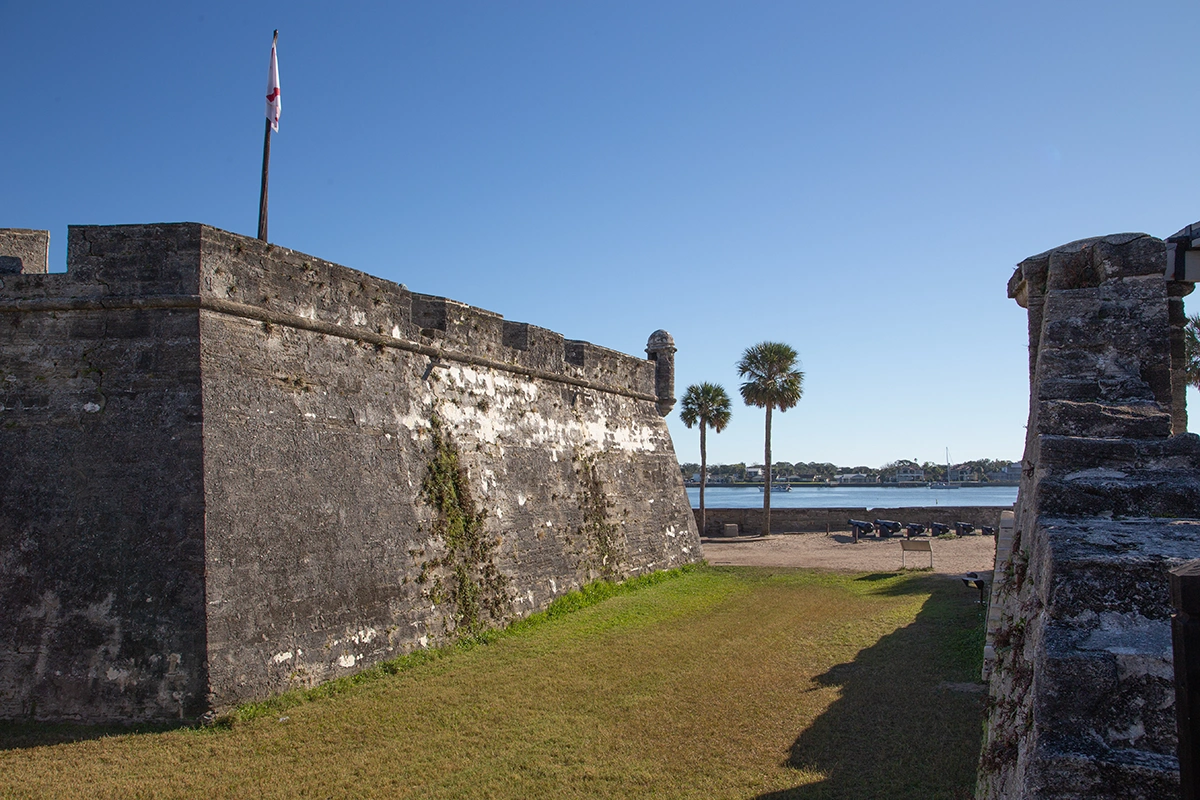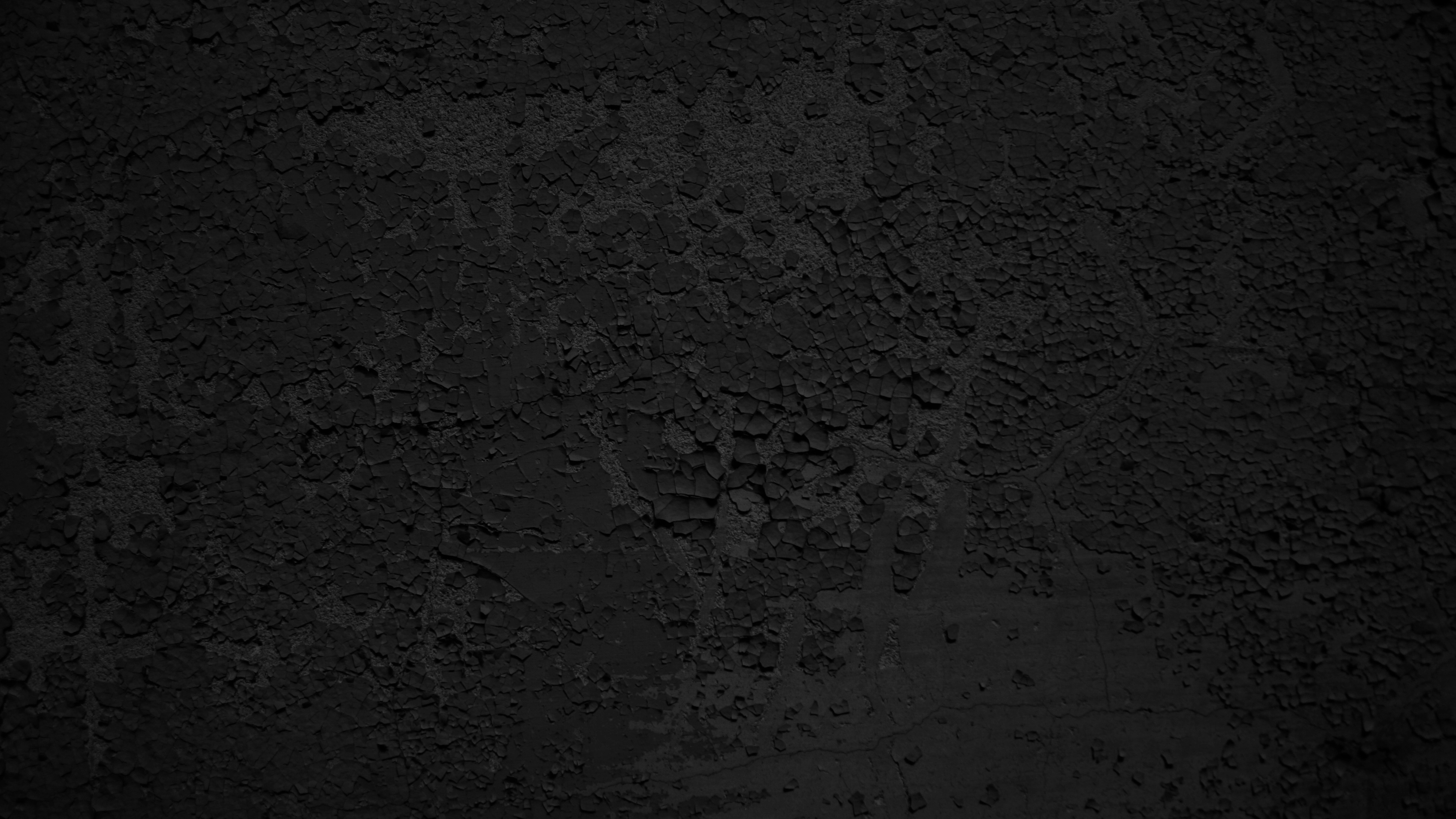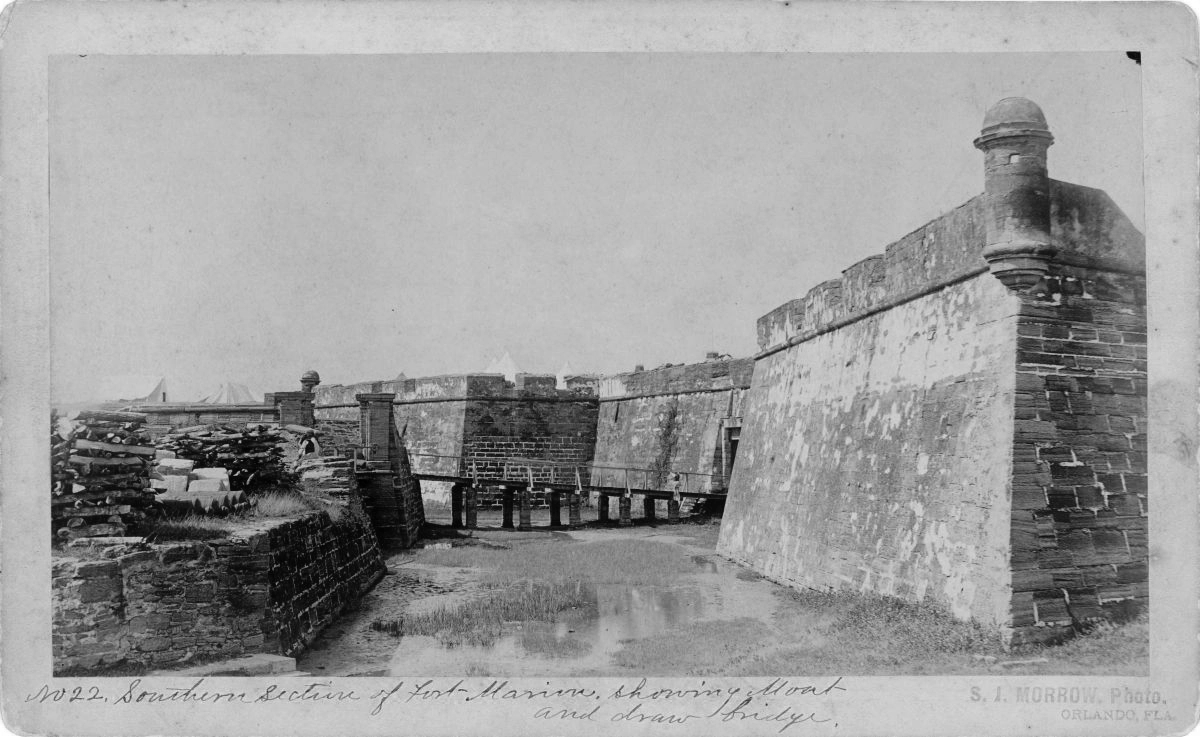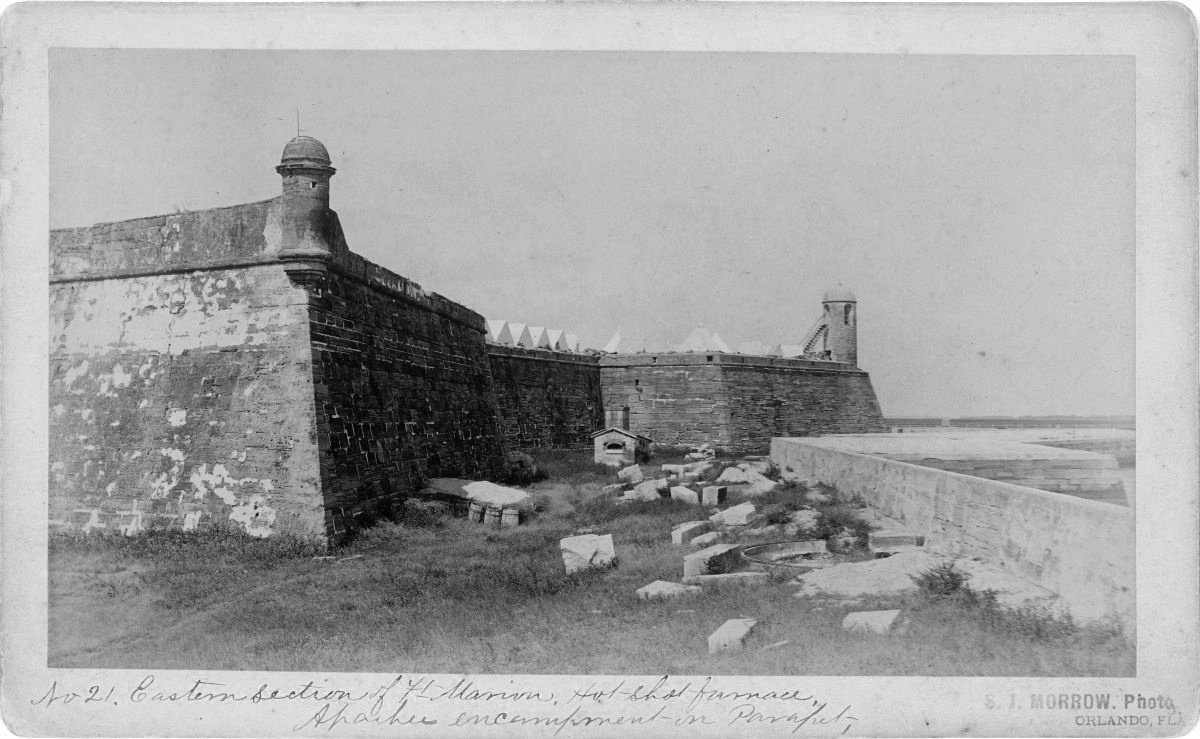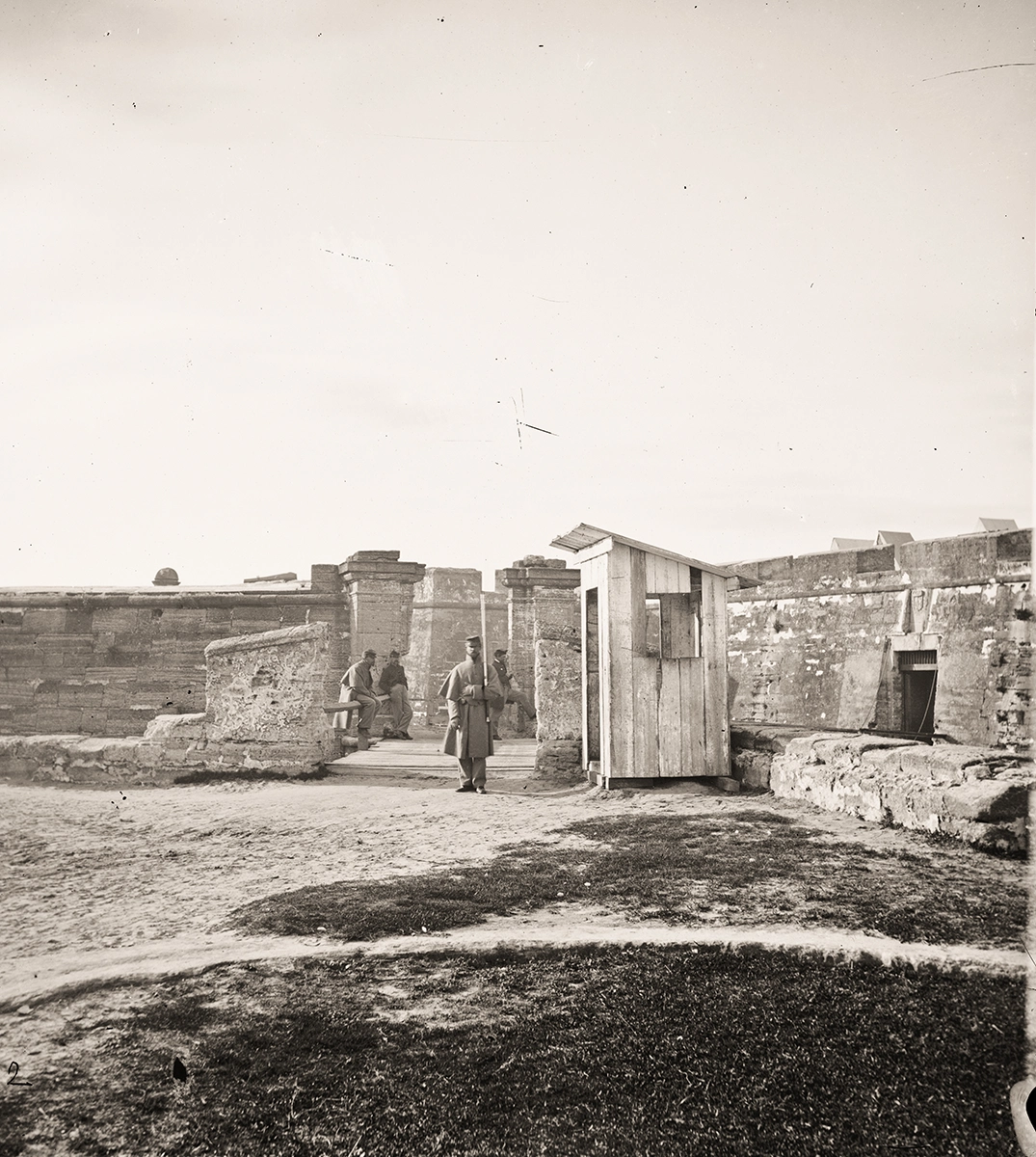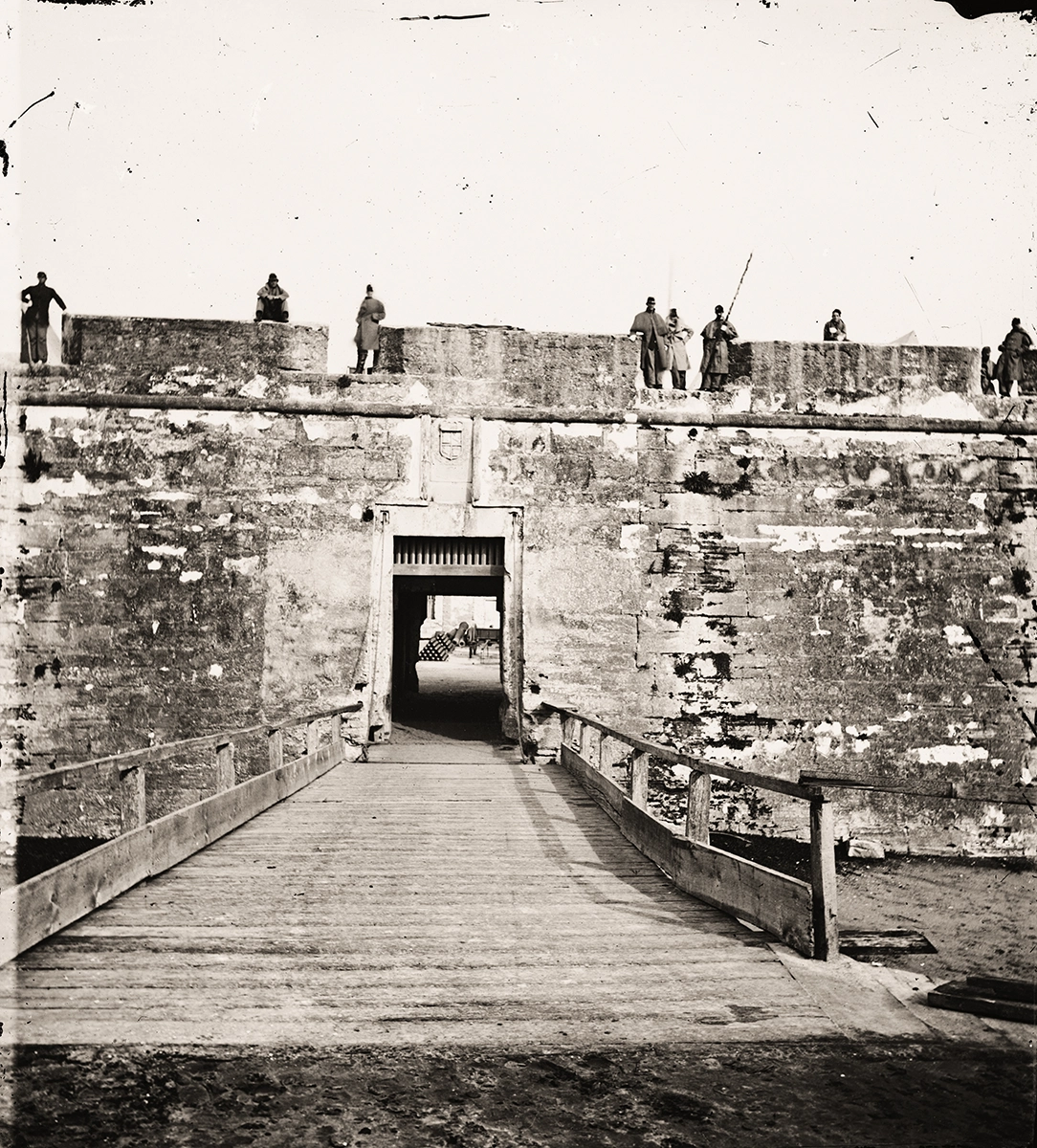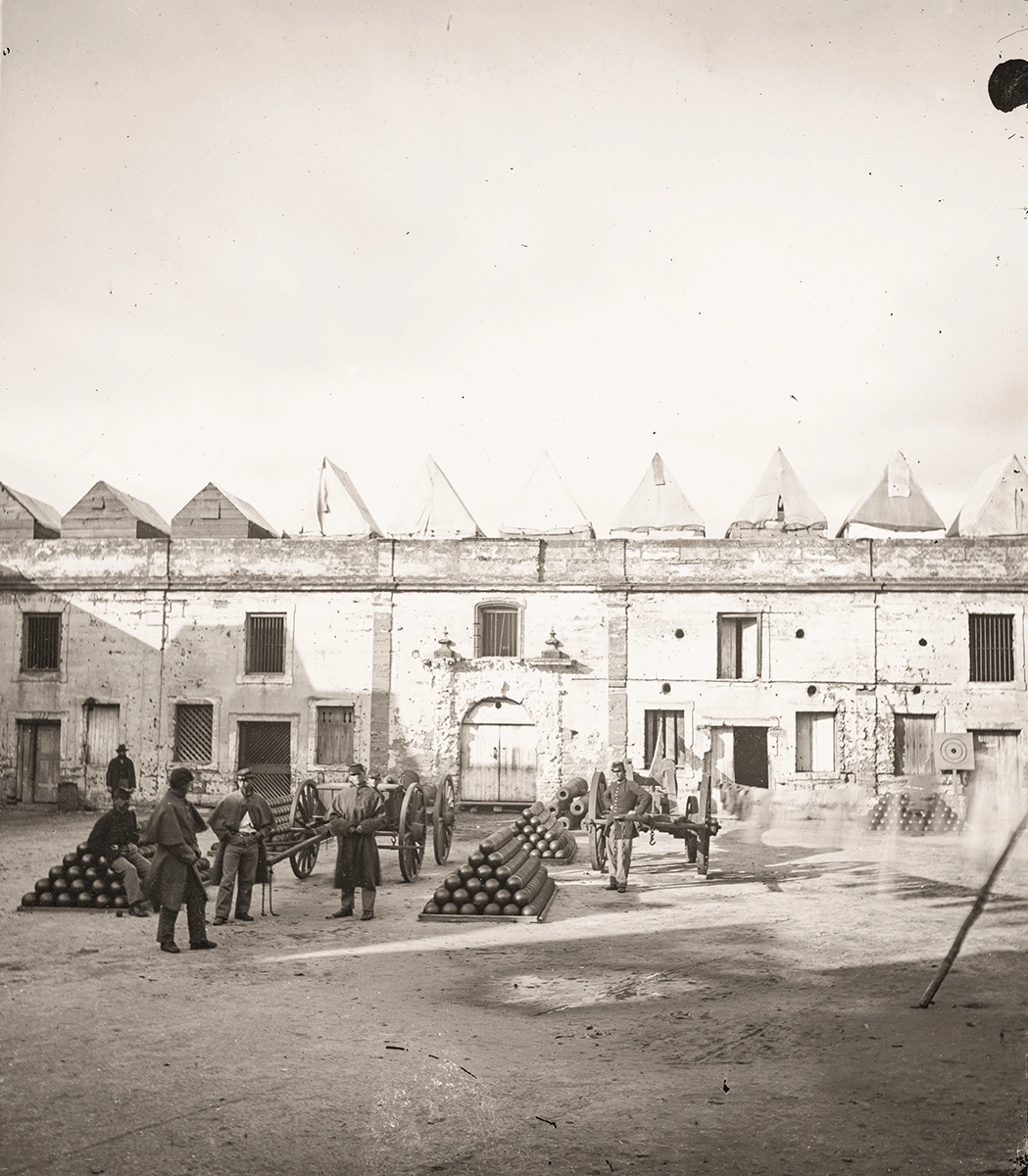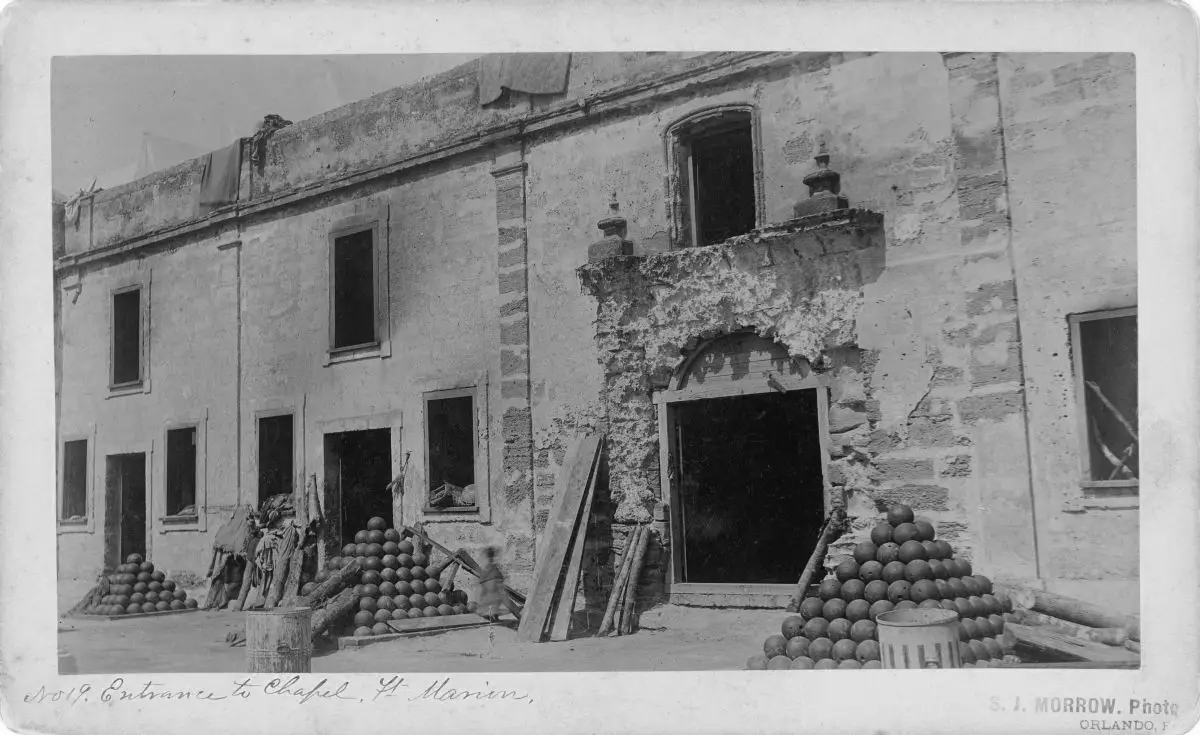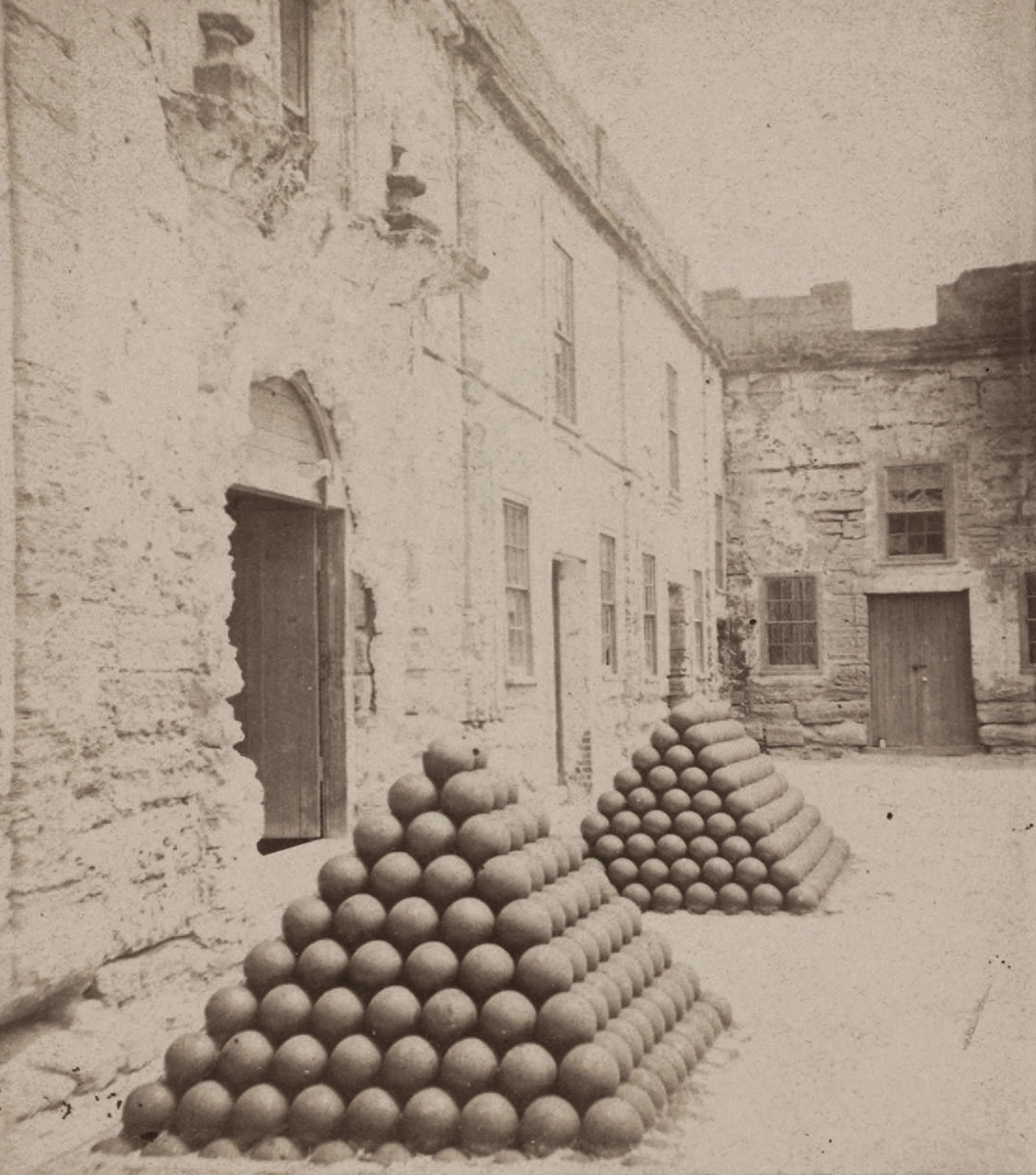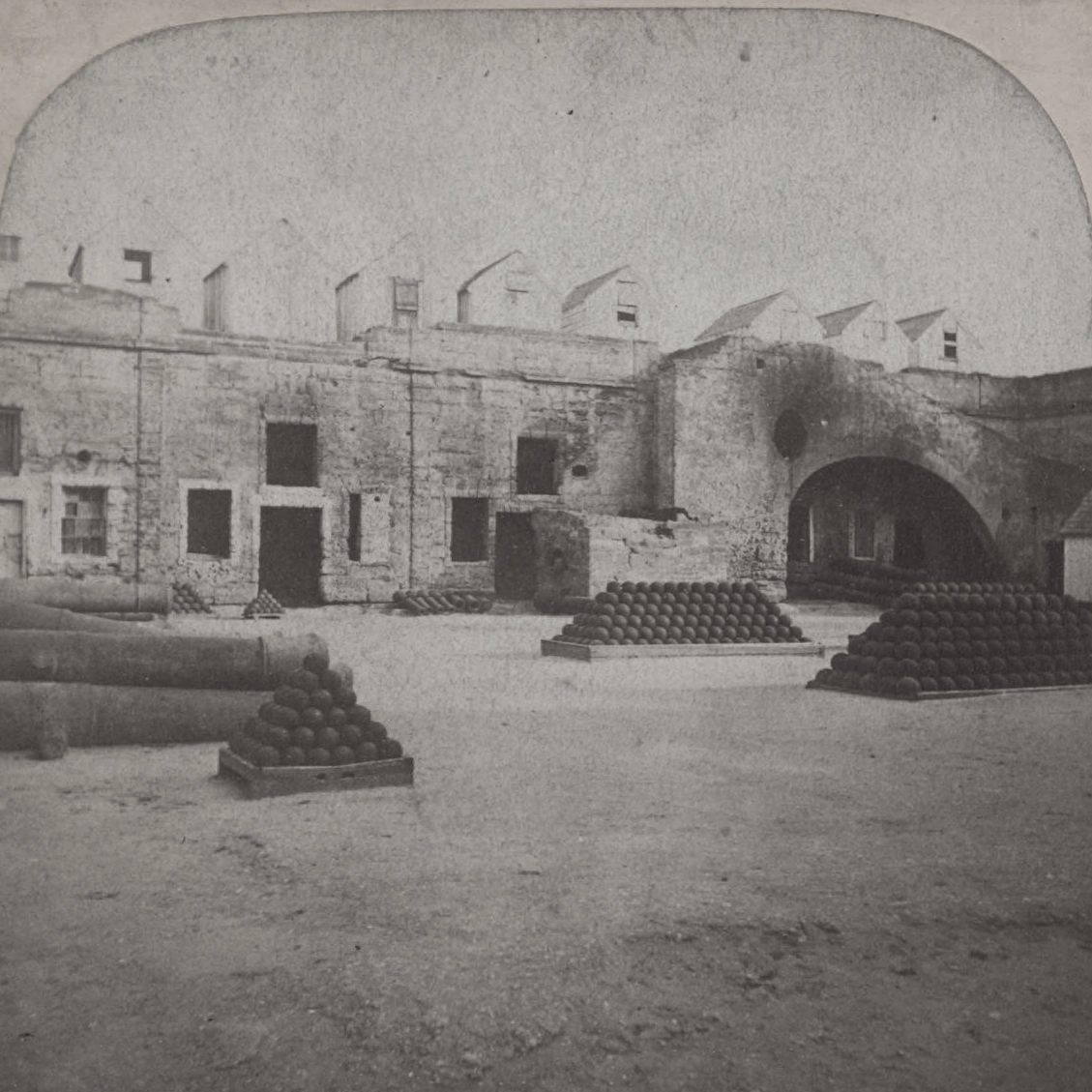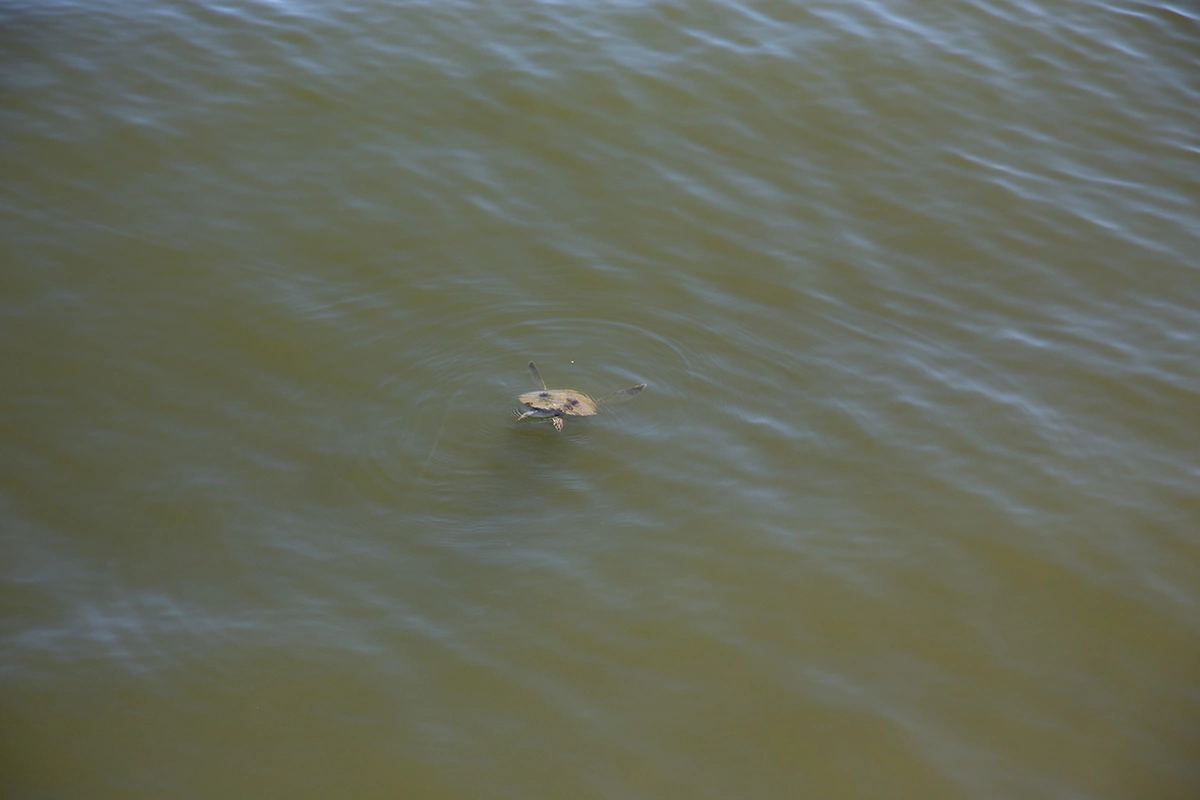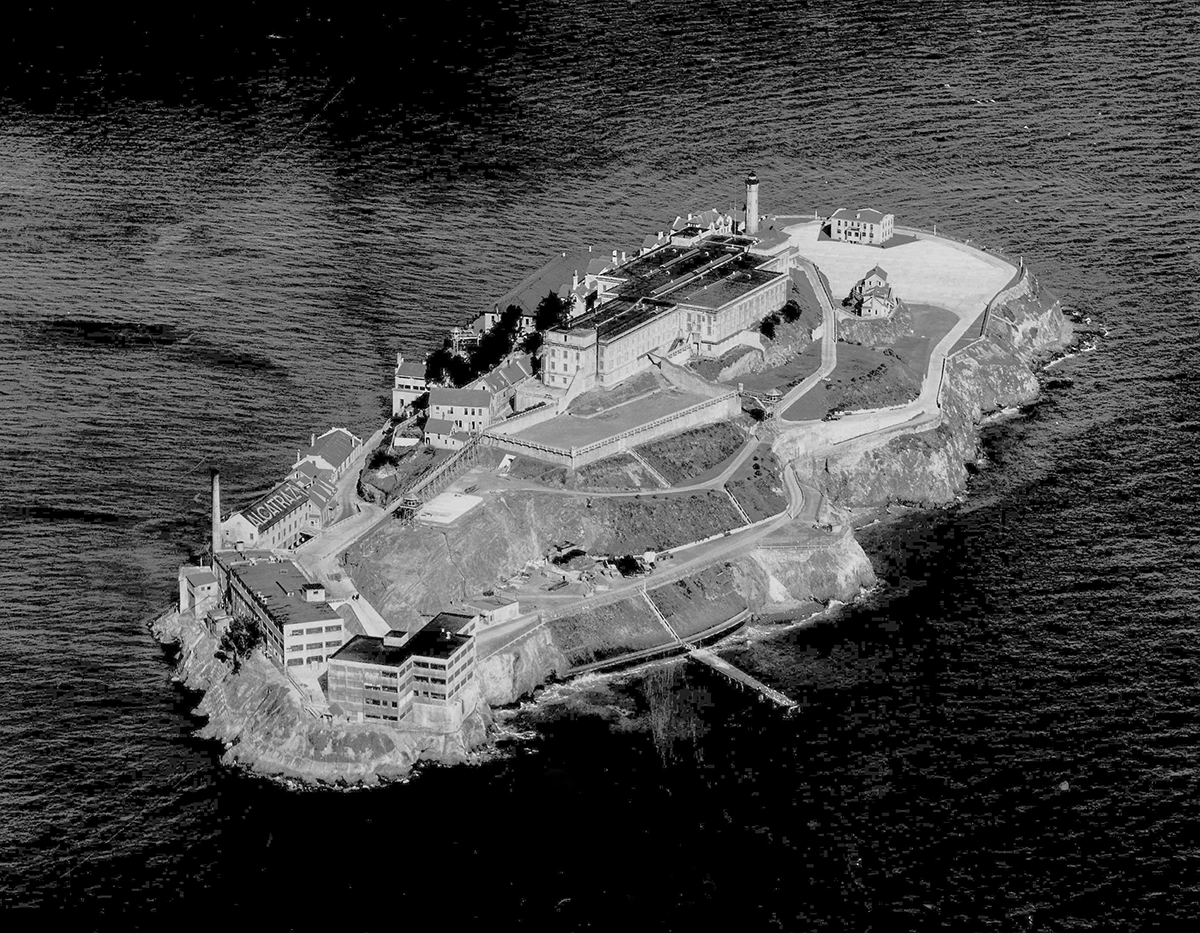Sunday, February 2, 2025
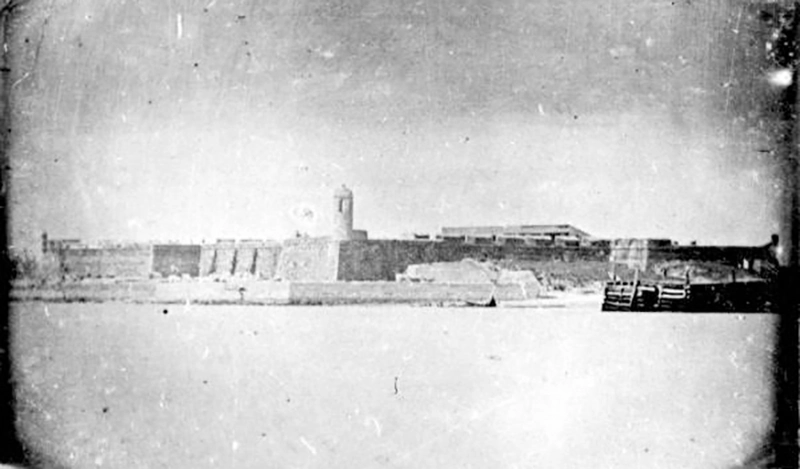
Castillo de San Marcos is a Spanish military fortification which was constructed in Saint Augustine, Florida, in 1672 and is now considered the oldest masonry structure in the United States. Designed by Ignacio Daza, construction began on October 2, 1672 and was commenced by Governor Don Manuel Cendoya in the Spanish colony of San Agustin.
In 1668, San Agustin was sacked by pirates who, under the command of Robert Searle, were able to easily penetrate the town's weak defenses and raid it virtually uncontested. In response, Spanish Queen Regent Mariana quickly allocated the necessary funds and ordered a 300-man garrison to be constructed. Cendoya arrived from Spain in July of 1671 and his engineer Daza arrived the following year. Construction began in earnest in 1672, particularly after news reached of the 1670 English settlement of Charles Towne which was only a 2-days' voyage north.
After nearly 6 months of construction the bastions had been built to a height of 11 feet, but by this time both Cendoya and Daza had died of unknown illnesses. Their deaths were but a portent for what was to be a difficult 23 year construction project. Most of the physical hardship fell on the nearby Native inhabitants of Florida who were paid very little for what was very hard work. The labor force also consisted of both free and enslaved Africans. The Spanish government allowed people of all ethnicities to purchase (or serve) their way into freedom in society. African slaves who had escaped from ther English captors in Carolina were able to gain their freedom in Spanish San Agustin thanks to King Charles II whose 1693 edict declared "liberty to all...the men as well as the women...so that by their example and by my liberality others will do the same." This led to the founding of the first legally sanctioned free Black settlement in the United States (in 1738), just north of Saint Augustine, in what was to be called Gracia Real de Santa Teresa de Mose, also known as Fort Mose. The military leader of Fort Mose was an escaped slave from Carolina who was born in the Gambia region of Africa and baptised as "Francisco Menendez" after he sought, and found, refuge in San Agustin.
Castillo de San Marcos was "officially" completed in 1695. Shortly thereafter, in 1702, British General James Moore led his forces in an expedition to capture Saint Augustine. Although the English were unable to penetrate the fort, the town was destroyed in the process. Most of the town's residents along with the soldiers (about 1500 persons in total) crammed inside the fort to take refuge. The siege was finally ended when the Spanish fleet arrived from Havana and destroyed what remained of the English army at the cost of destroying the town itself. In 1728 another failed attack was waged against the Castillo by the British Colonel John Palmer with a force of 300 English and 100 Native Americans. Among those who defended the Castillo against the 1728 invasion was Francisco Menendez, the captain of the free black militia in Saint Augustine. The construction of Fort Mose, which Menedez would later lead, was begun in 1738. Renovations to the Castillo also began in 1738 but were dragged on for nearly two decades due, in part, to the British siege of 1740 which was led by colonial Governor James Oglethorpe. During this siege, the fort was bombarded relentlessly by canons for 27 days to no effect. The siege of 1740, like the rest, ended in failure. The renovations to the fort were finally completed in 1756 and in response to Oglethorpe's strategic use of the river in the 1740 siege, the Spanish constructed nearby Fort Matanzas to prevent any further use by an enemy as a rear entrance to the city.
In 1763, the Treaty of Paris turned Florida into a British colony and thus the Castillo changed its flags for the first time in its already long and distinguished history. The Castillo was now called "Fort St. Mark". British rule lasted only 20 years, however, during which time the United States embarked upon the Revolutionary War throughout which the fort served as a British military prison. During this time, three signers of the Declaration of Independence were held here (Thomas Heyward, Jr., Arthur Middleton, and Edward Rutledge) as was Christopher Gadsden, the Lieutenant governor of South Carolina.
The Peace of Paris treaty in 1784 brought control as well as the the Spanish flag back to Castillo De San Marcos. Later, in 1821, Florida became a United States Territory and under U.S control, the fort was renamed Marion in honor of of Carolina's Revolutionary War hero General Francis "The Swamp Fox" Marion. On January 10, 1861, Florida seceded from the Union and Fort Marion subsequently hoisted the flag of the Confederacy during the US Civil War, during which the fort saw no battle. In 1862, the United States Navy arrived and the fort was surrendered. It was subsequently used as a military prison primarily for Native Americans. Famous war chief Osceola and members of Geronimo's band of Apache, including his wife, were imprisoned within Fort Marion. Other notable prisoners include Kiowa Chief White Horse and Cheyenne Chief Grey Beard. Later, deserters from the Spanish-American War were also imprisoned here.
In 1900, Fort Marion was removed from the active list. It was preserved and recognized as a national monument in 1924. Fort Marion was officially deactivated in 1933, thus ending its 261 years of continuous military use. The fort was renamed by an act of Congress in 1942 back to its original name. In 1964, the fort's lawn became a gathering place in the civil rights movement when demonstrators including Martin Luther King, Jr had been barred entry across the street as a result of segregation.
Castillo de San Marcos has never been taken by force despite having been beseieged twice and attacked several times throughout its long 350 year history. The Castillo has, however, served the interests of 4 different countries consisting of Spain, Great Britain, the Confederate States and the United States. In each occurrence, control of the fort was handed over peacefully.
Historic Photos of Castillo De San Marcos
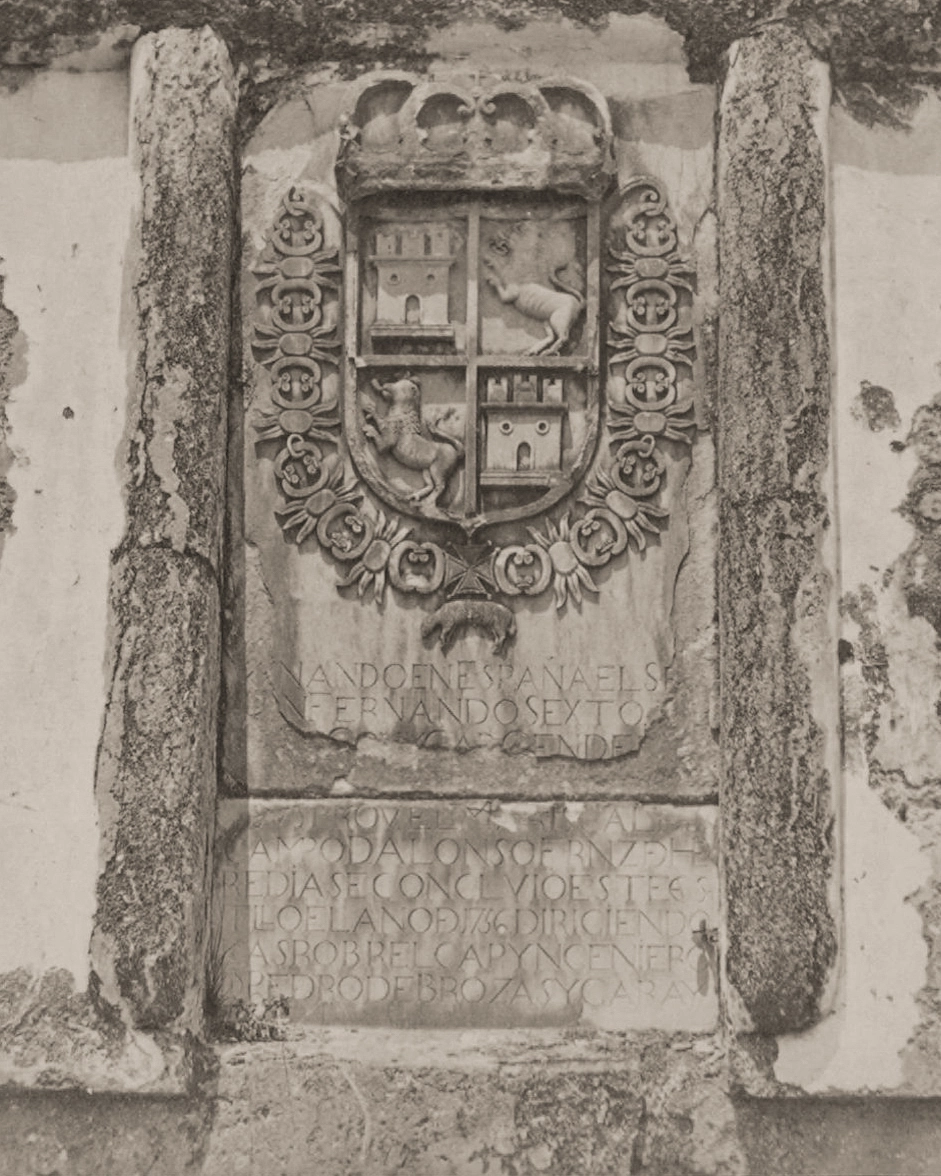
End Historic Photos
